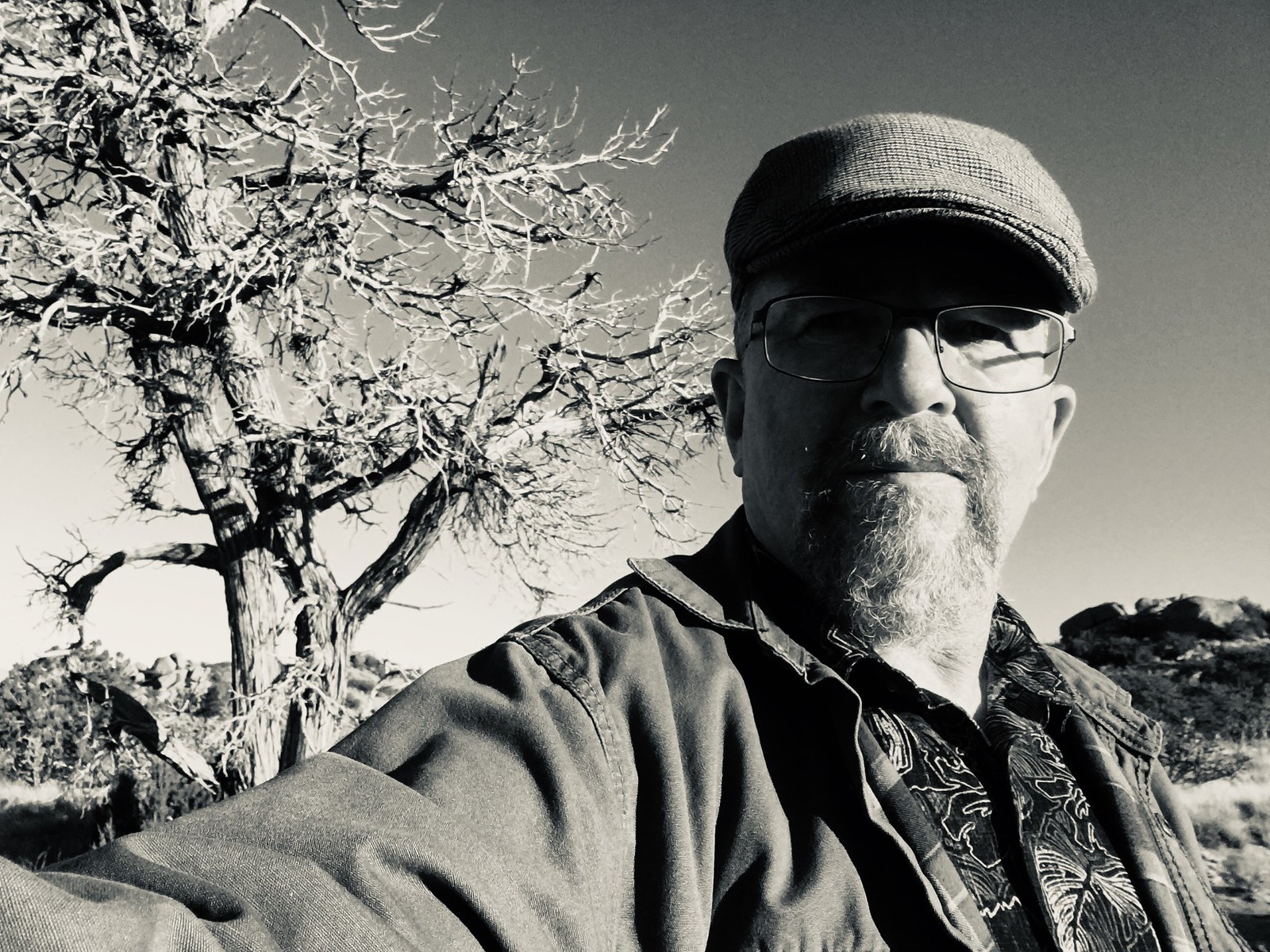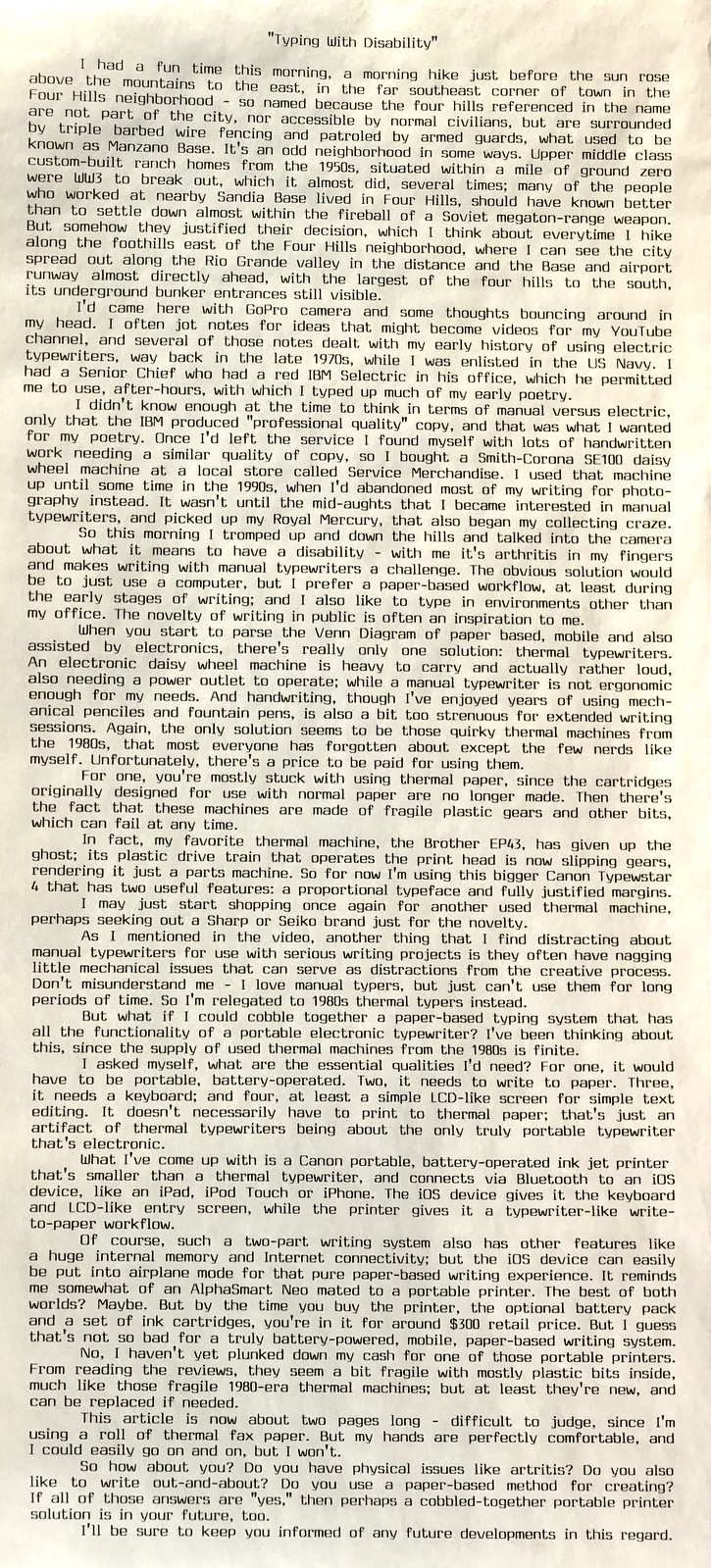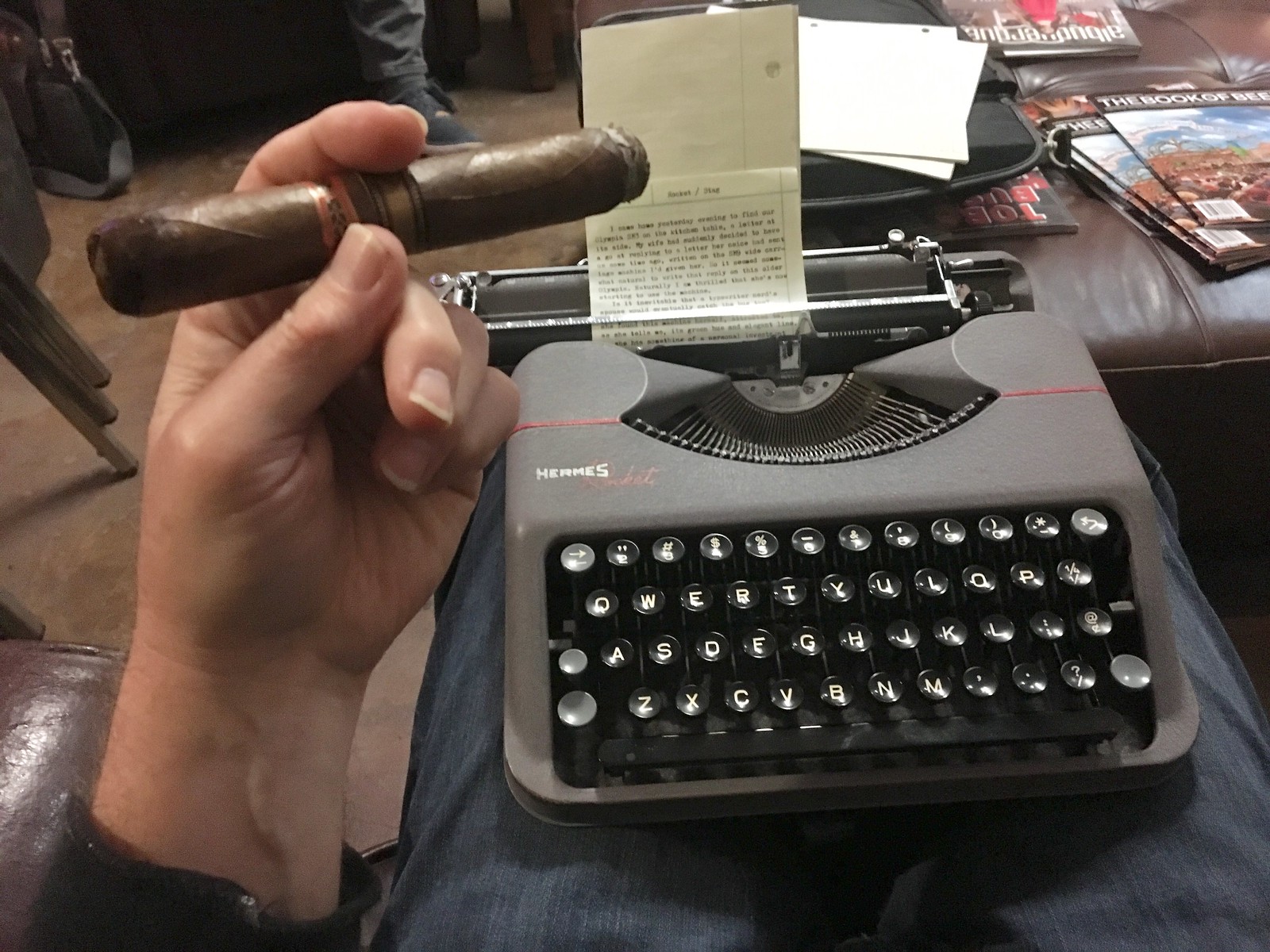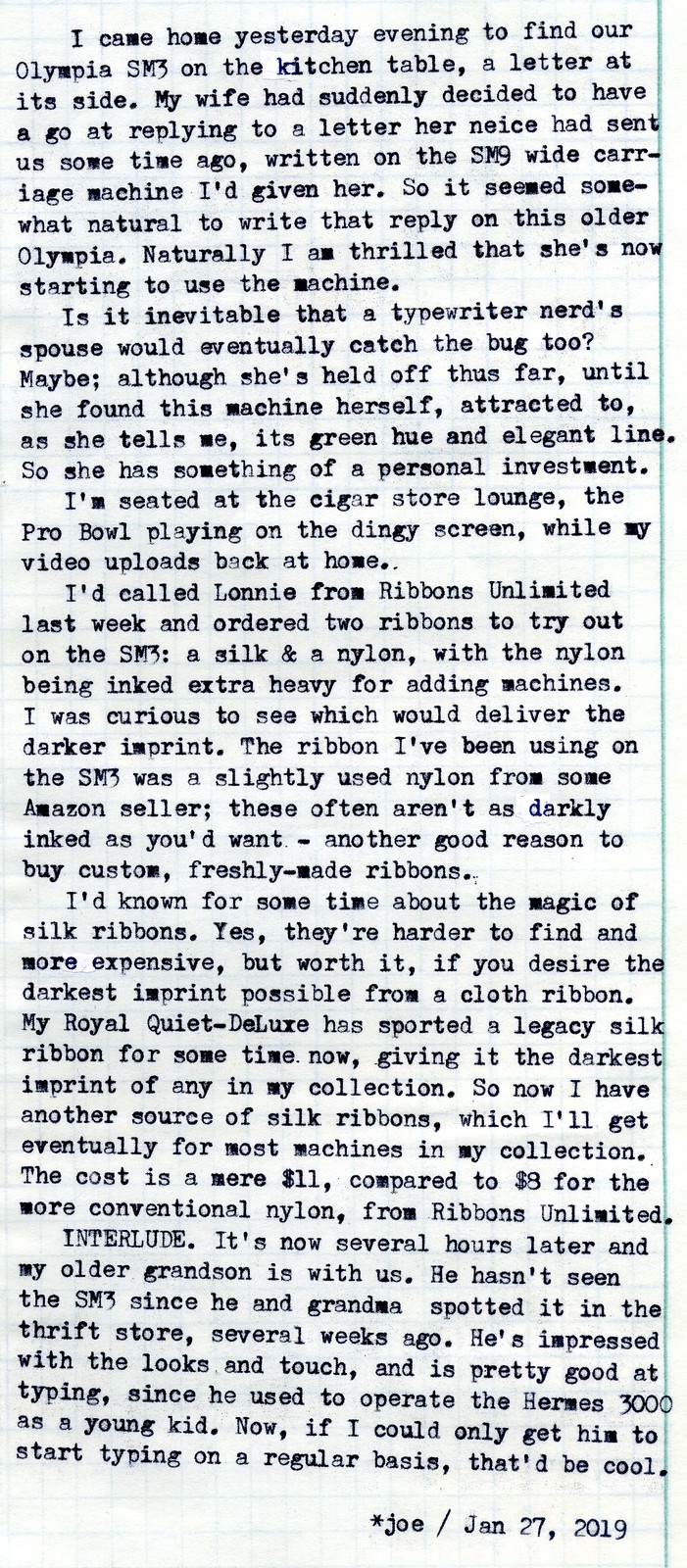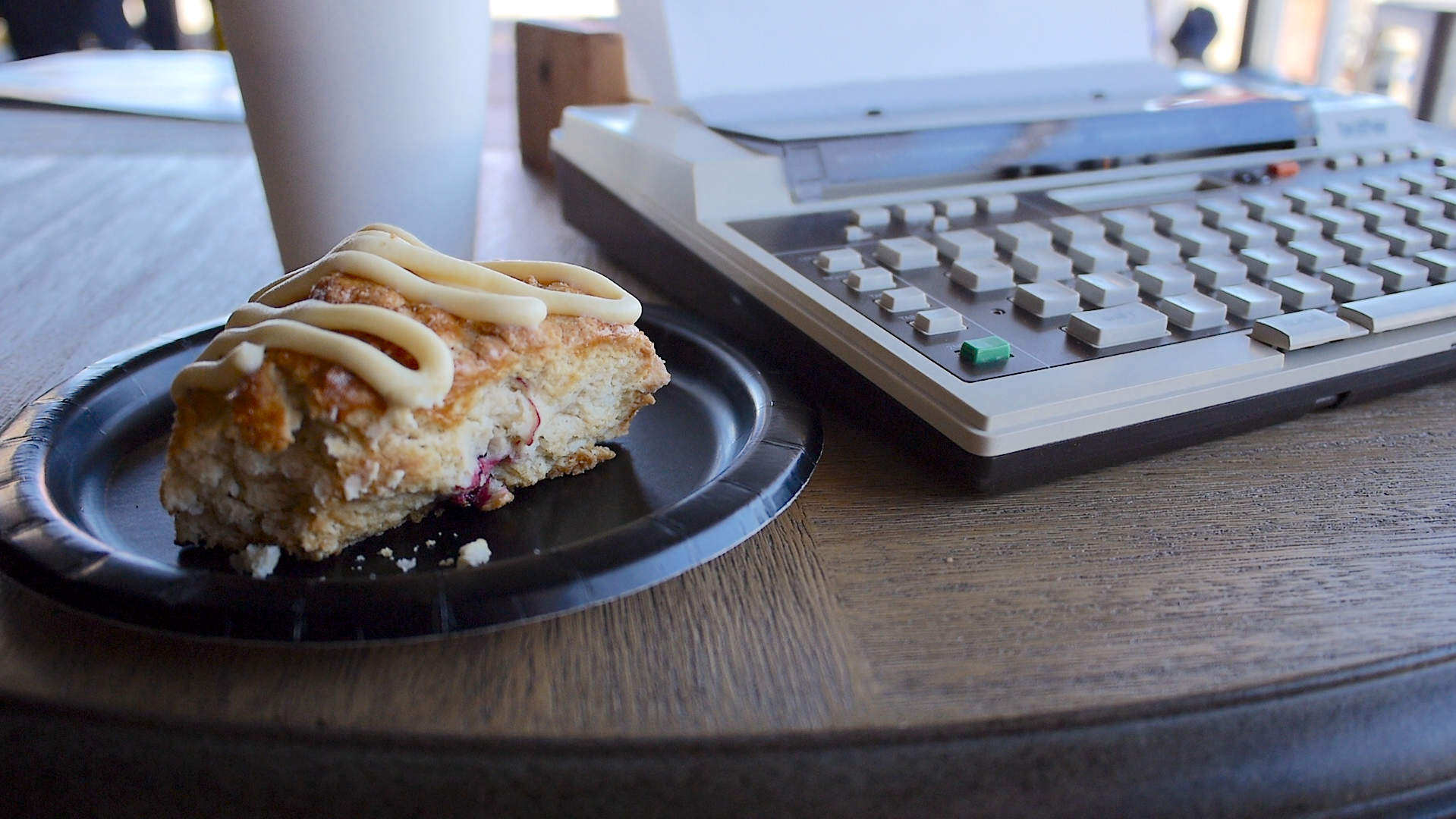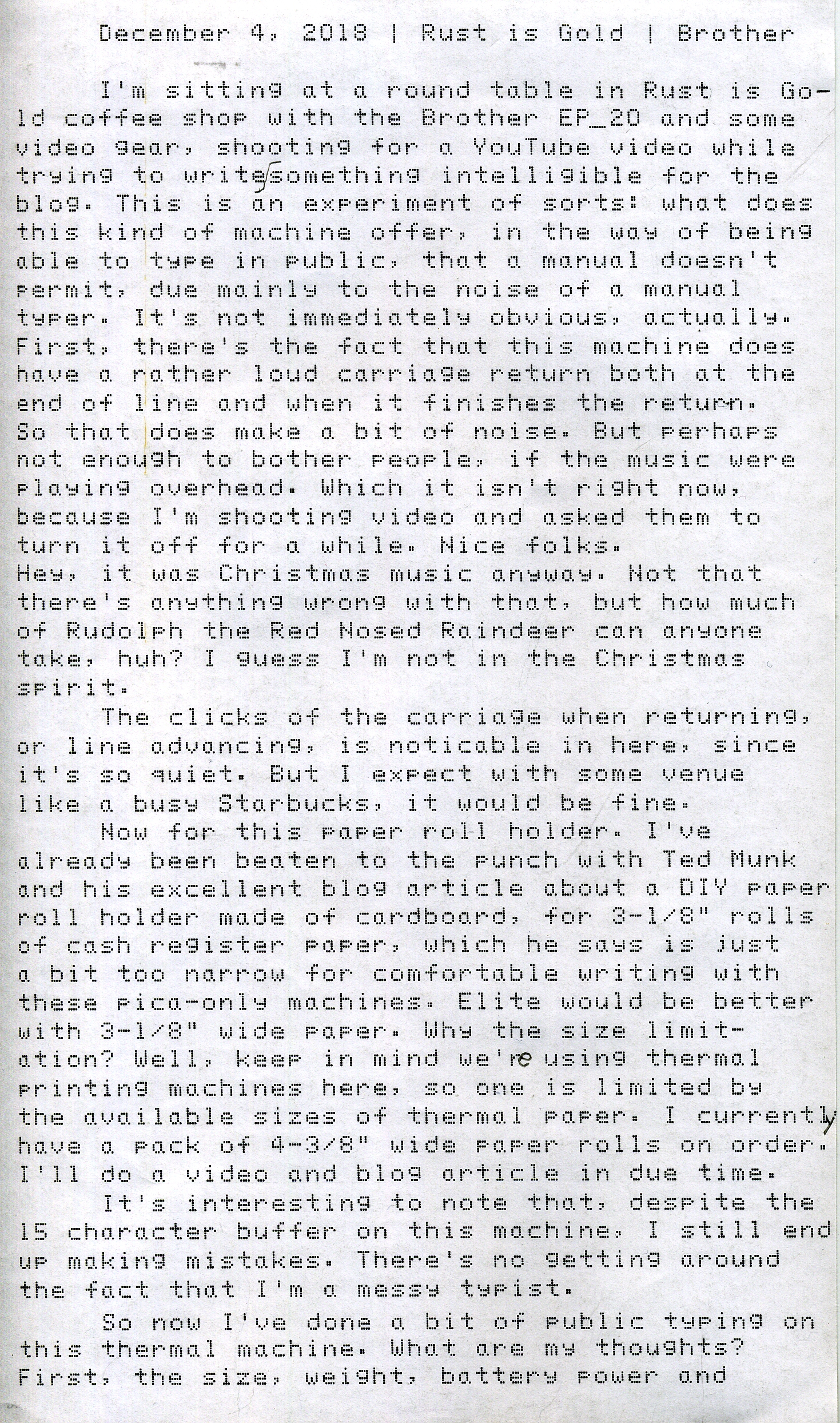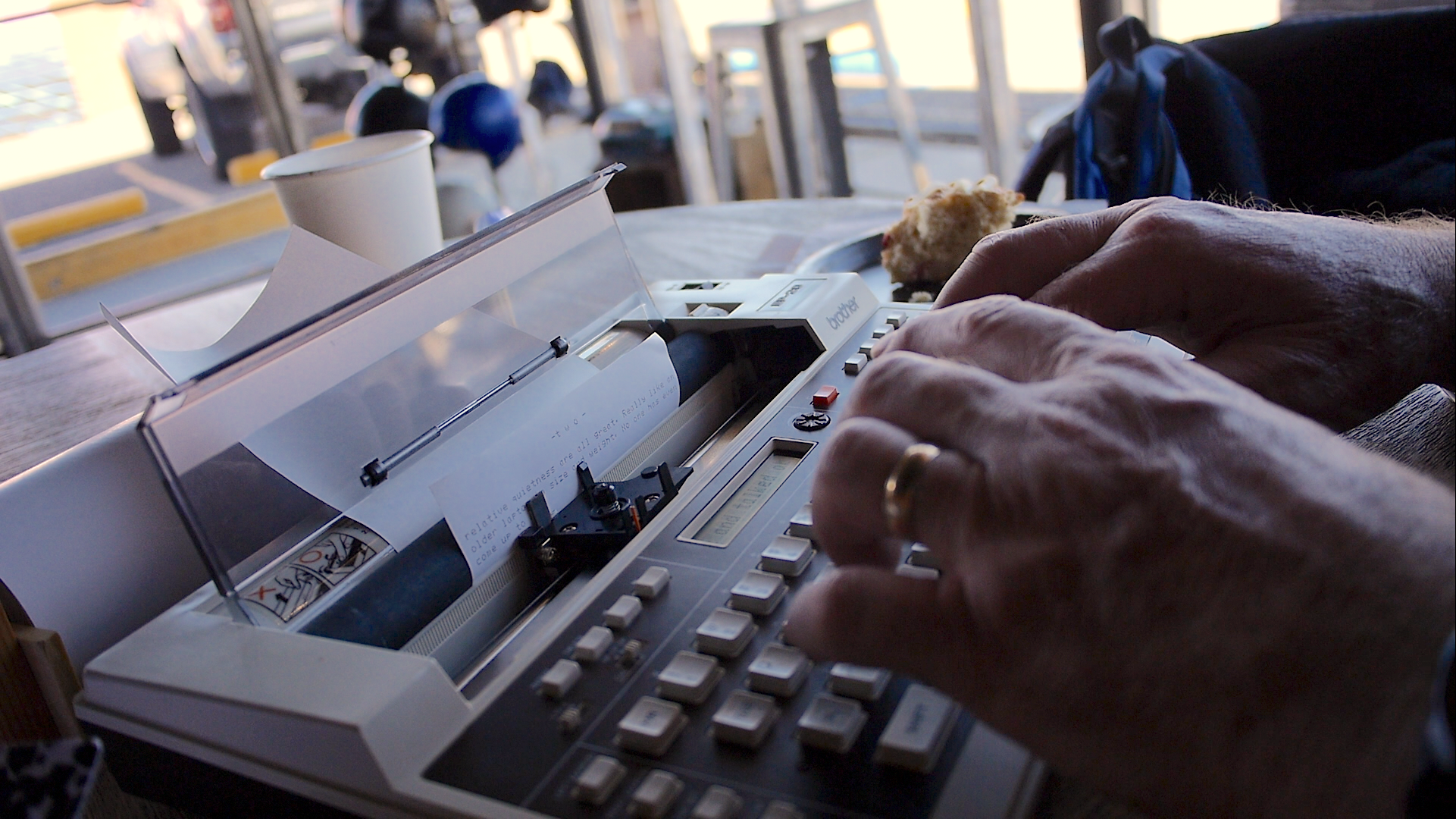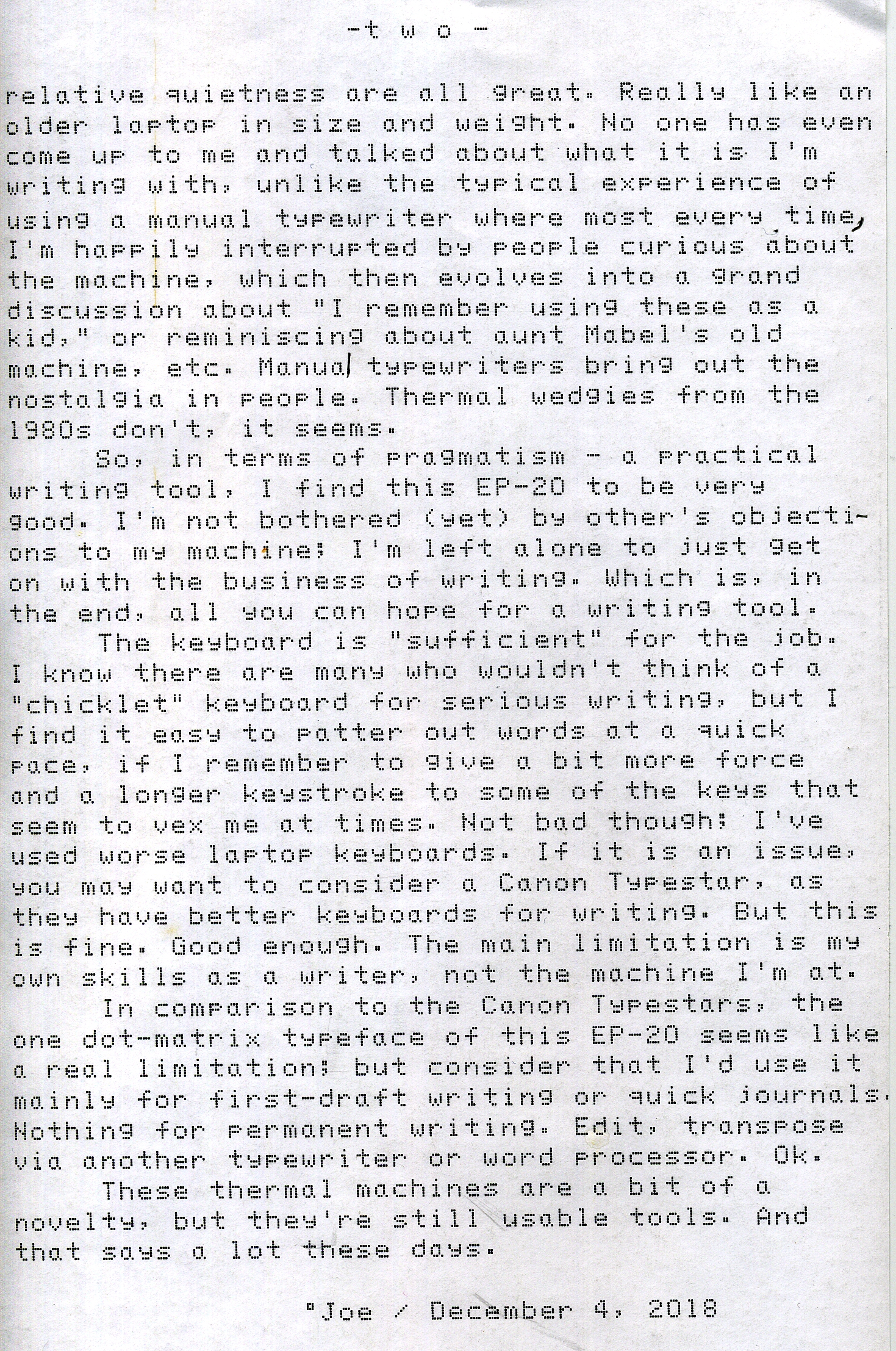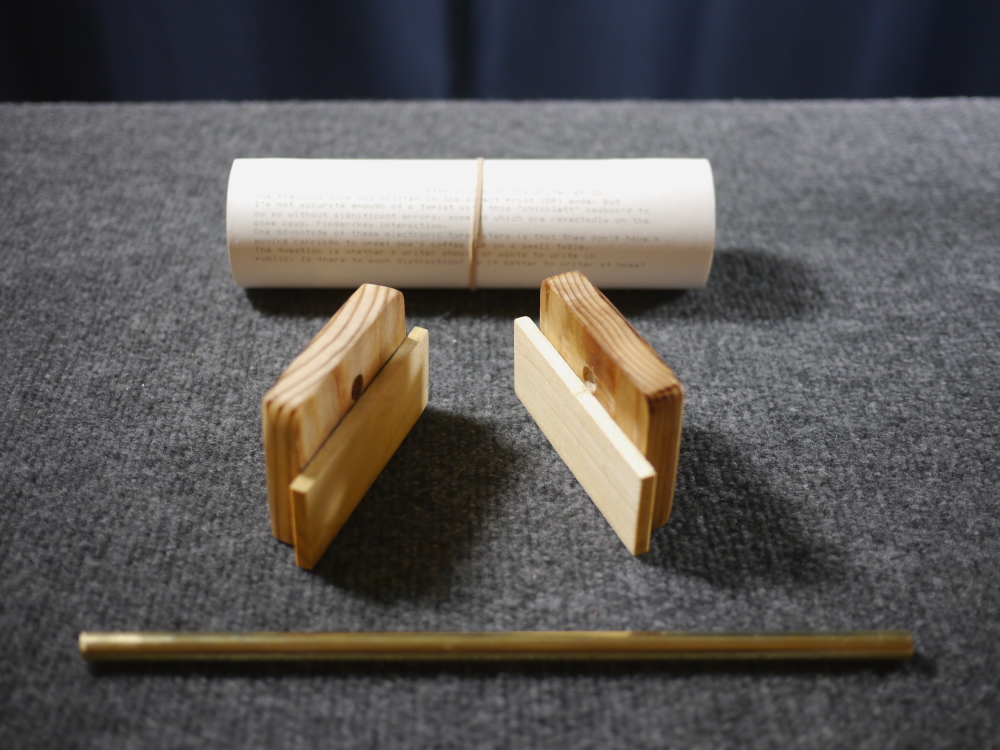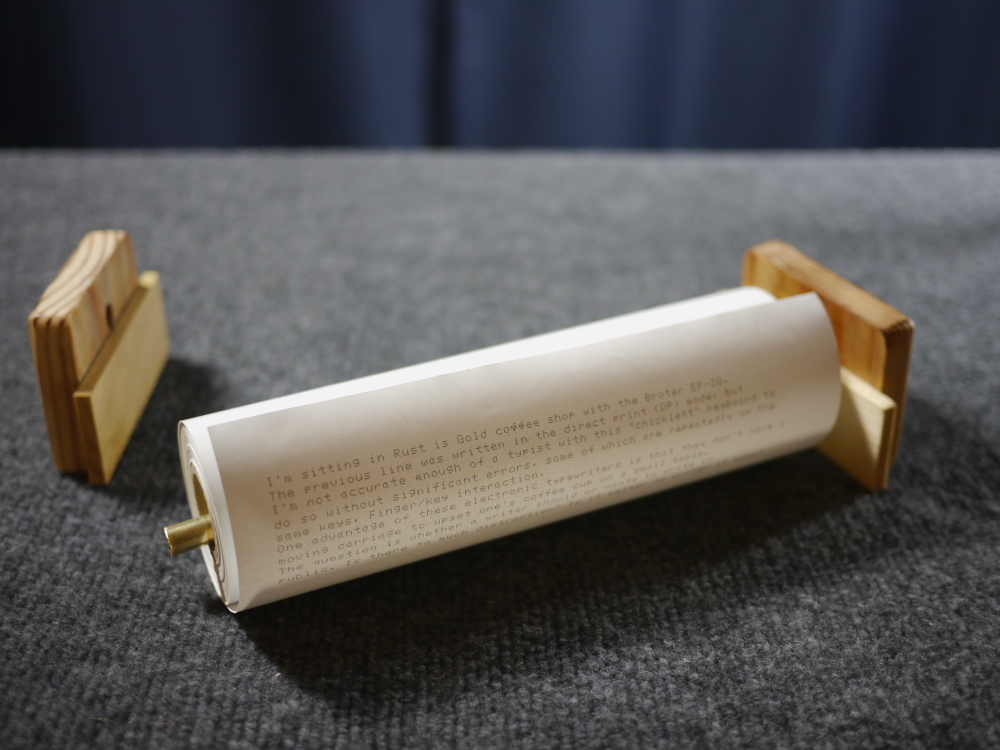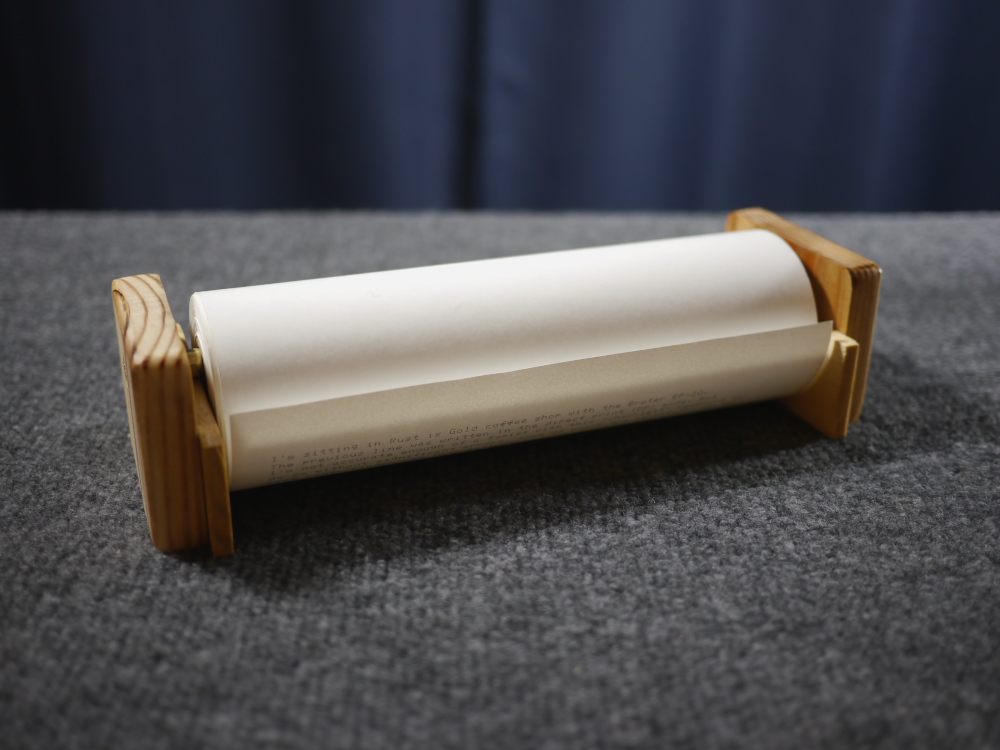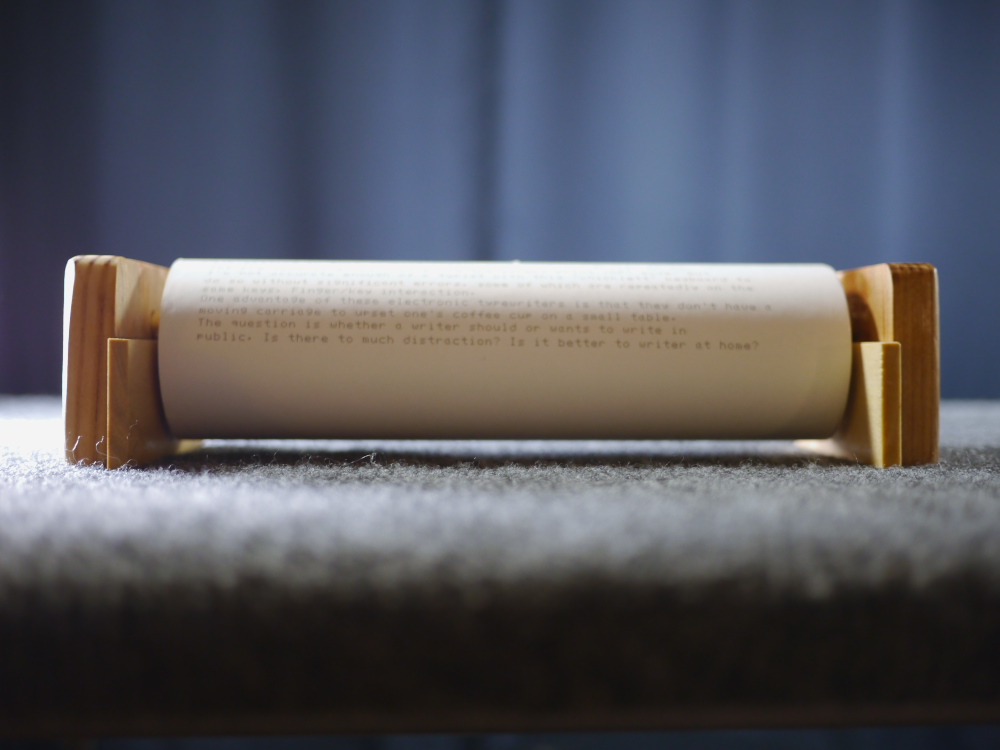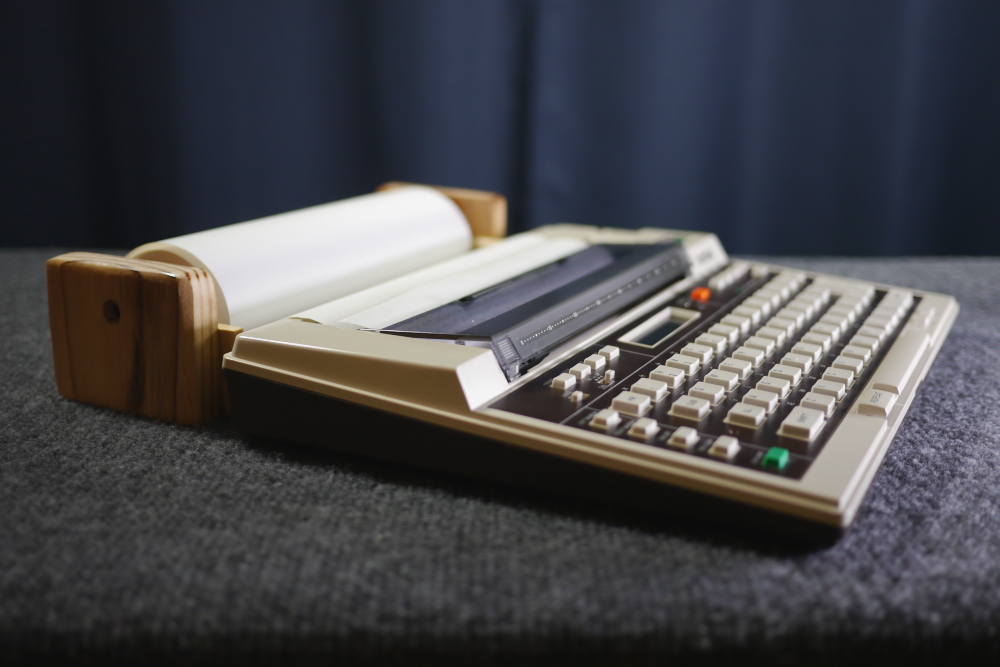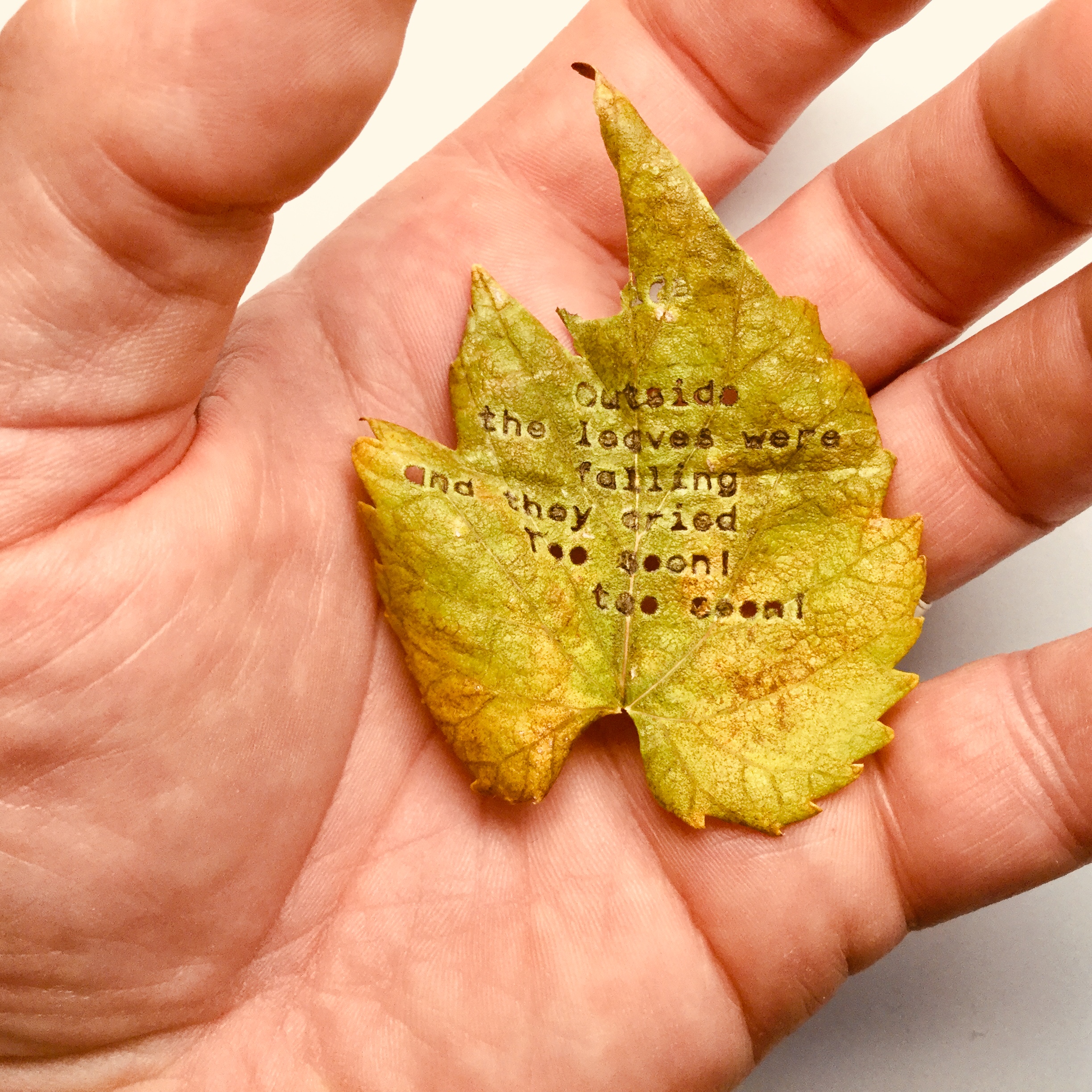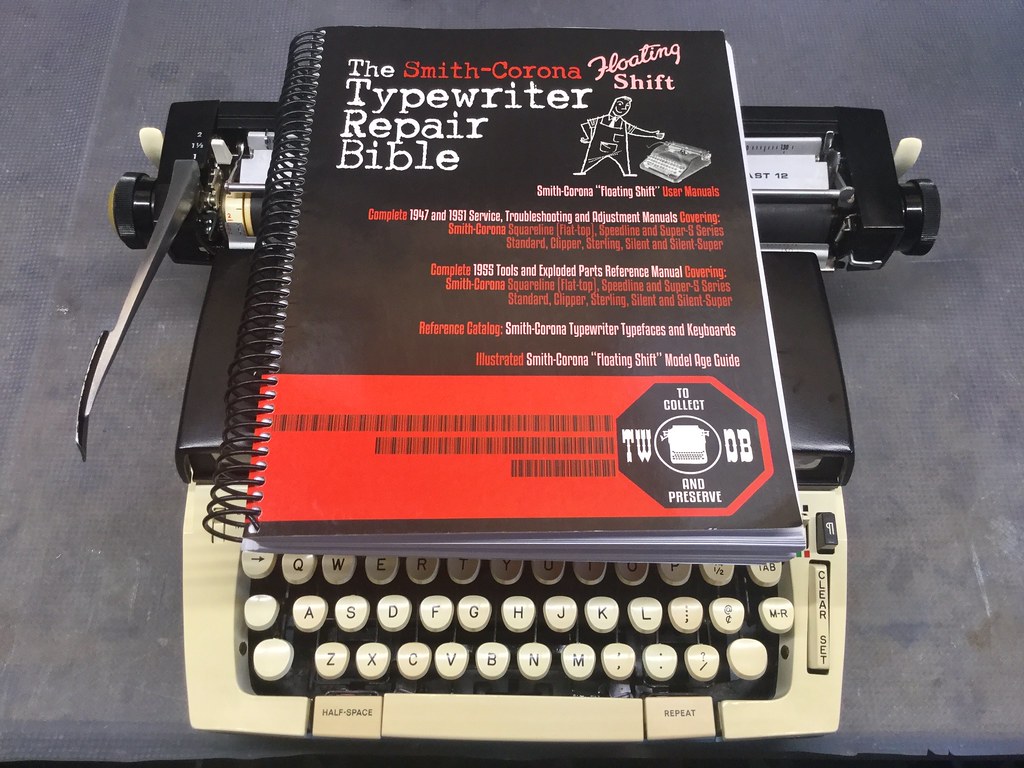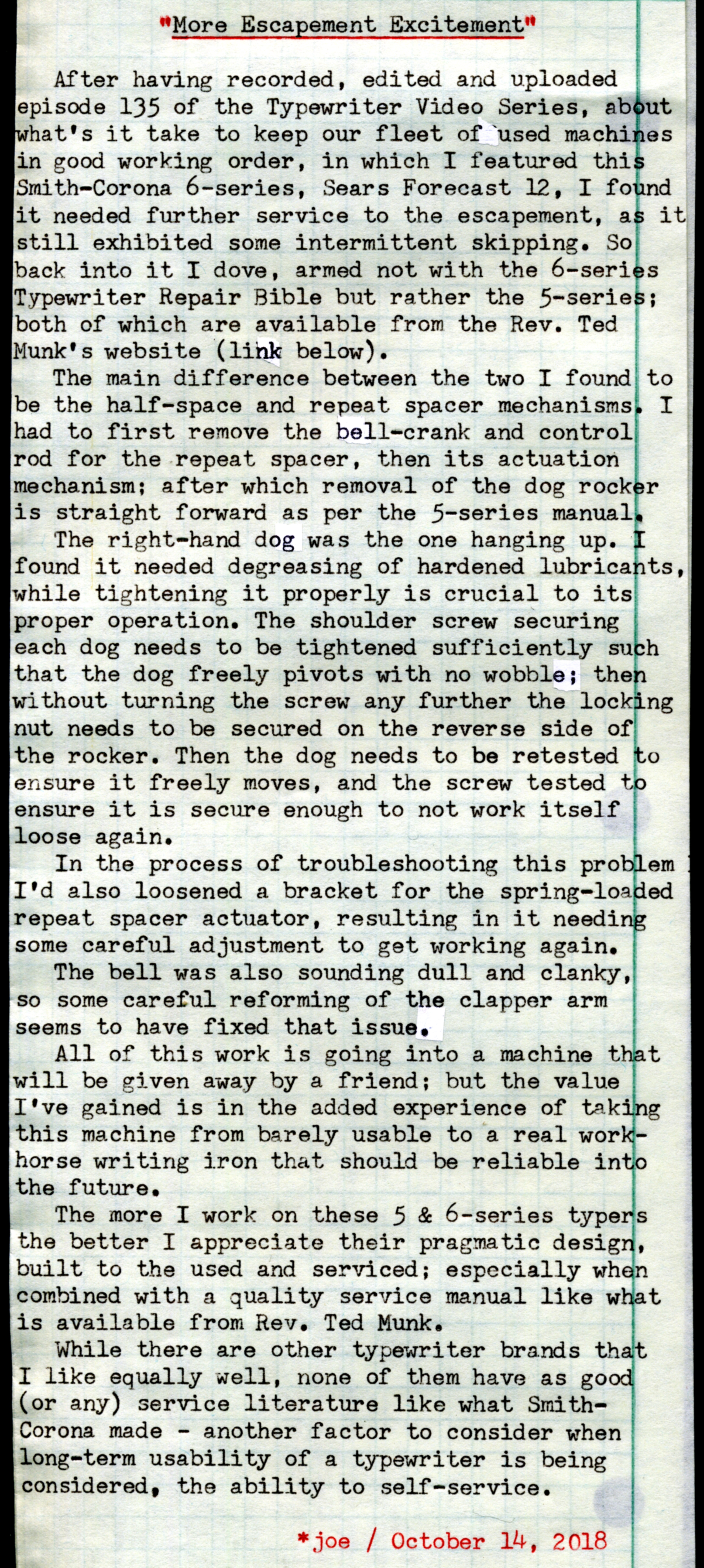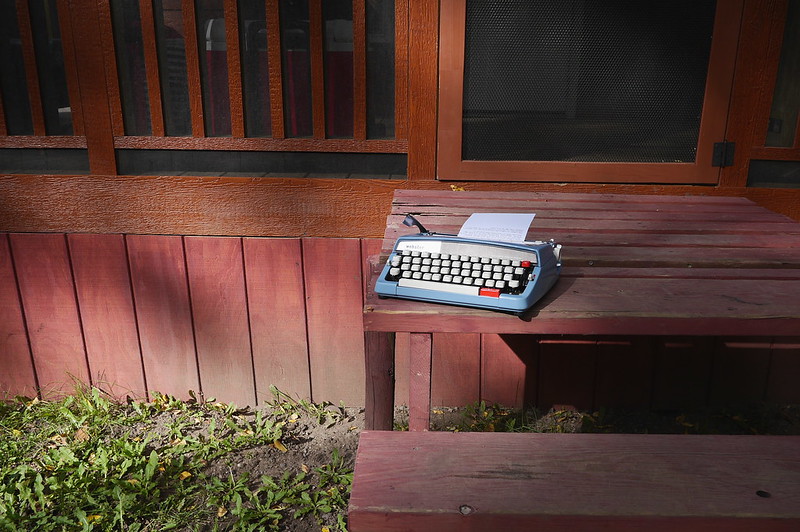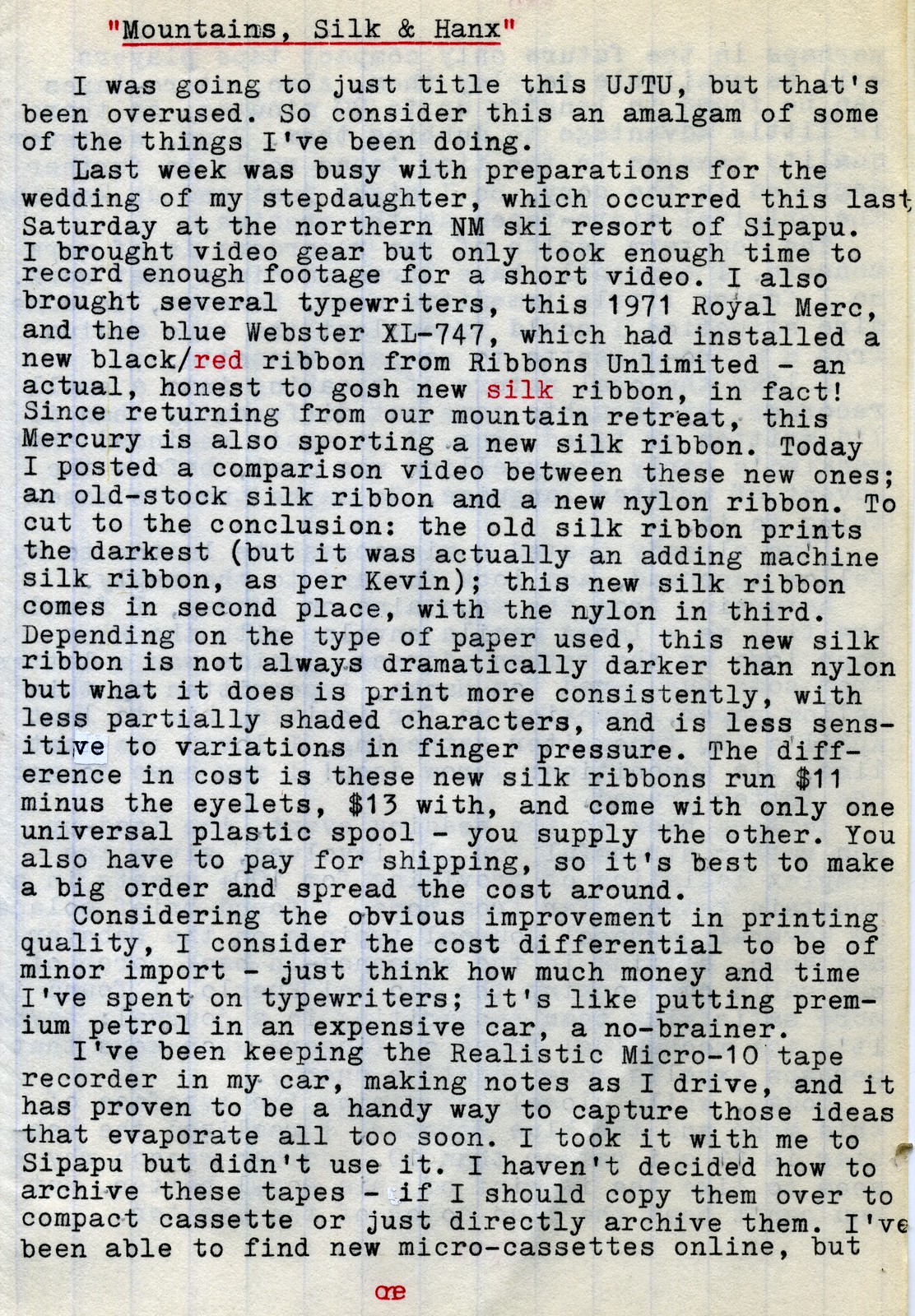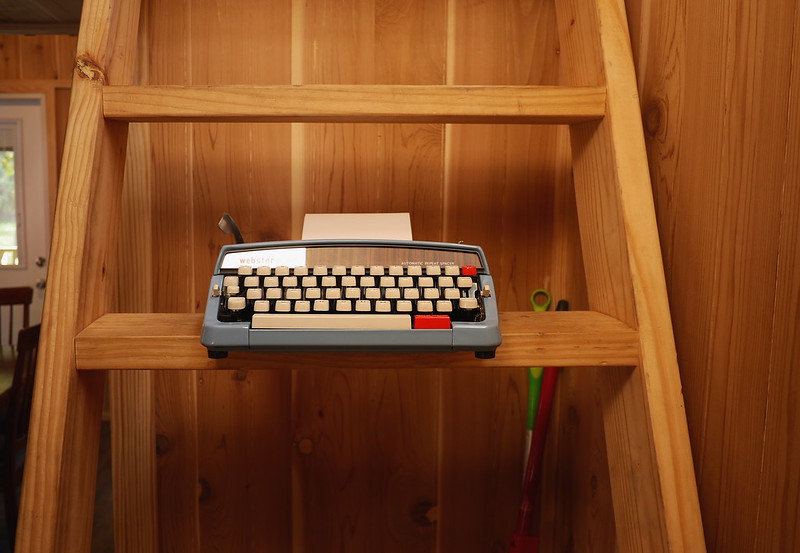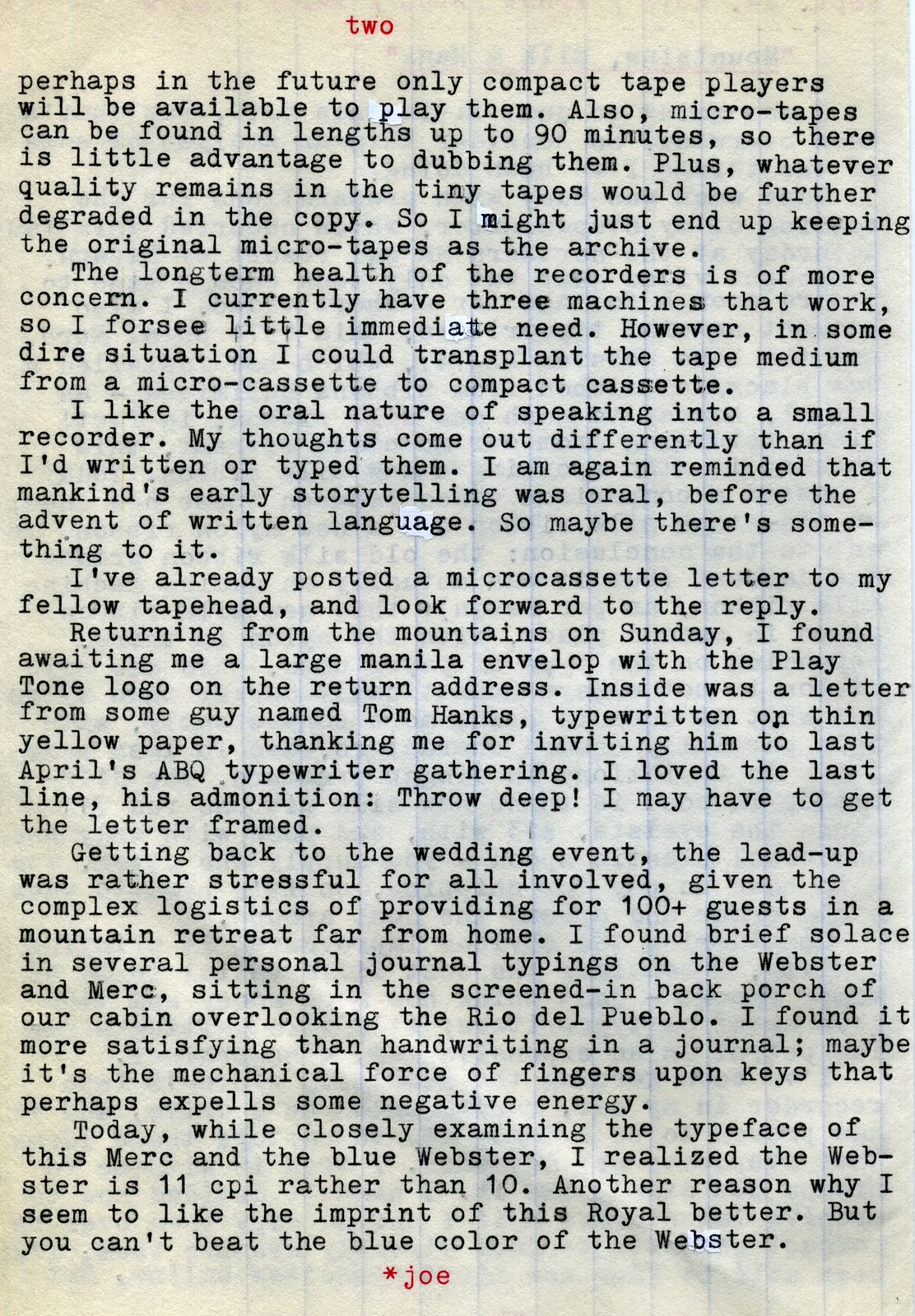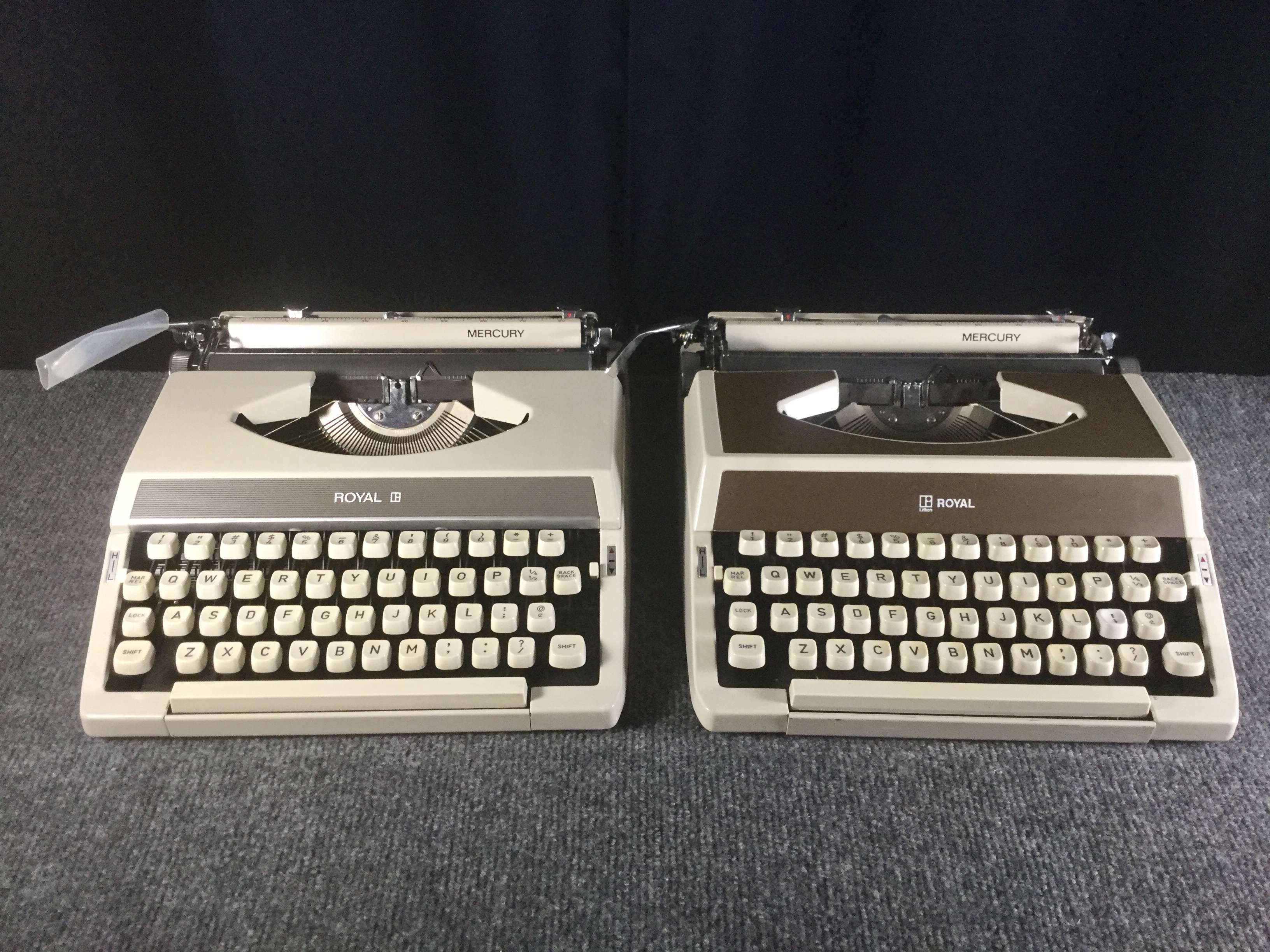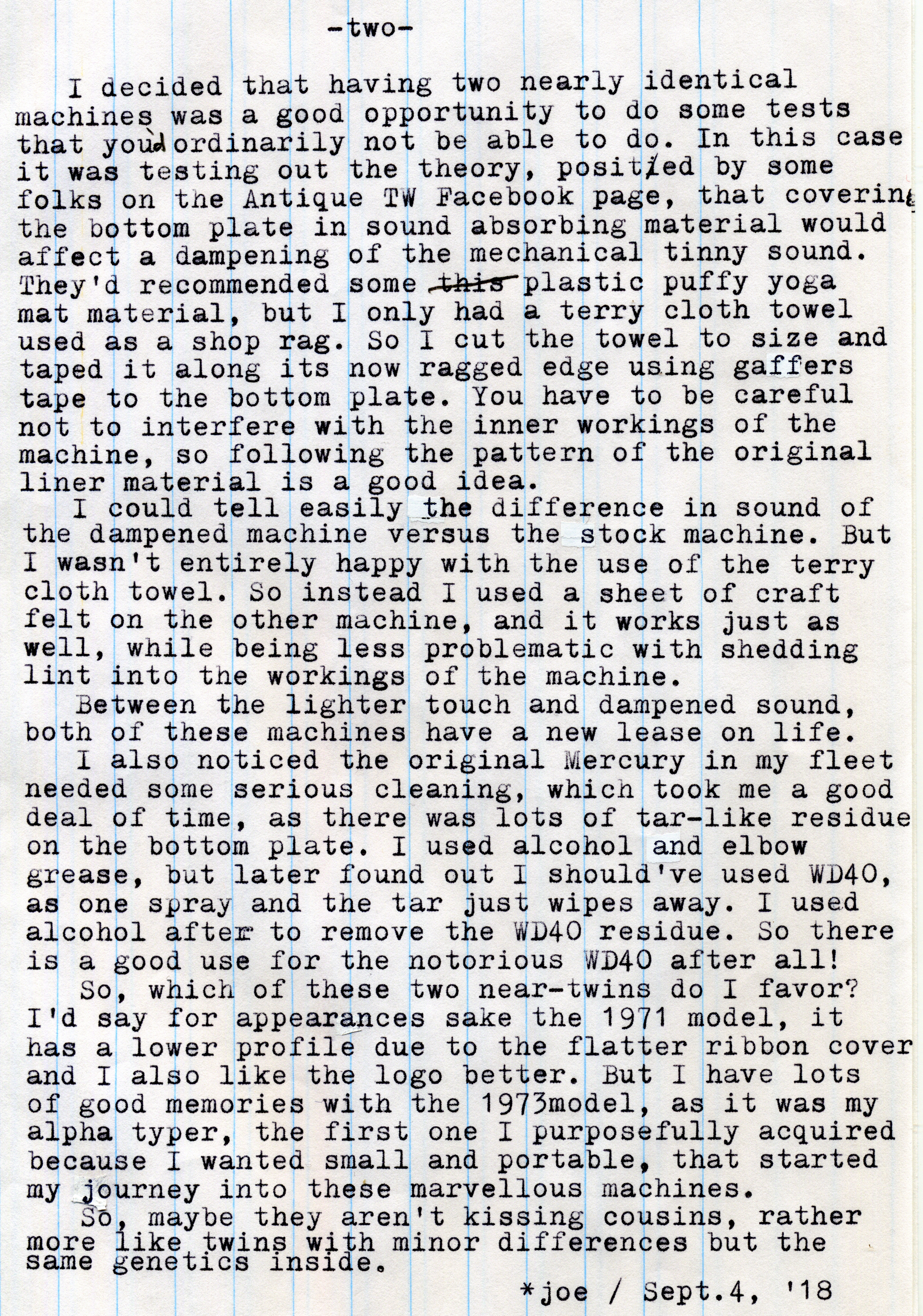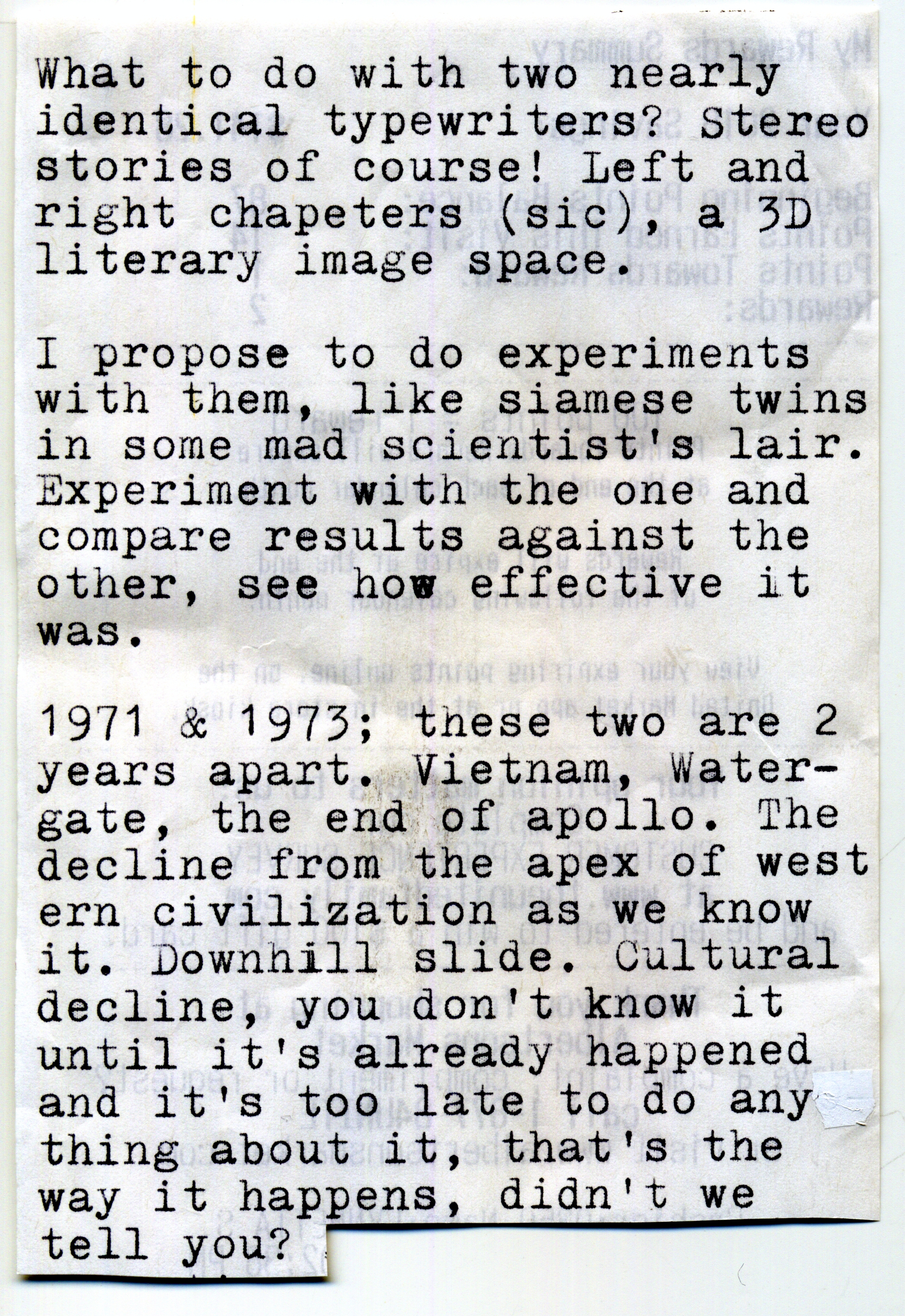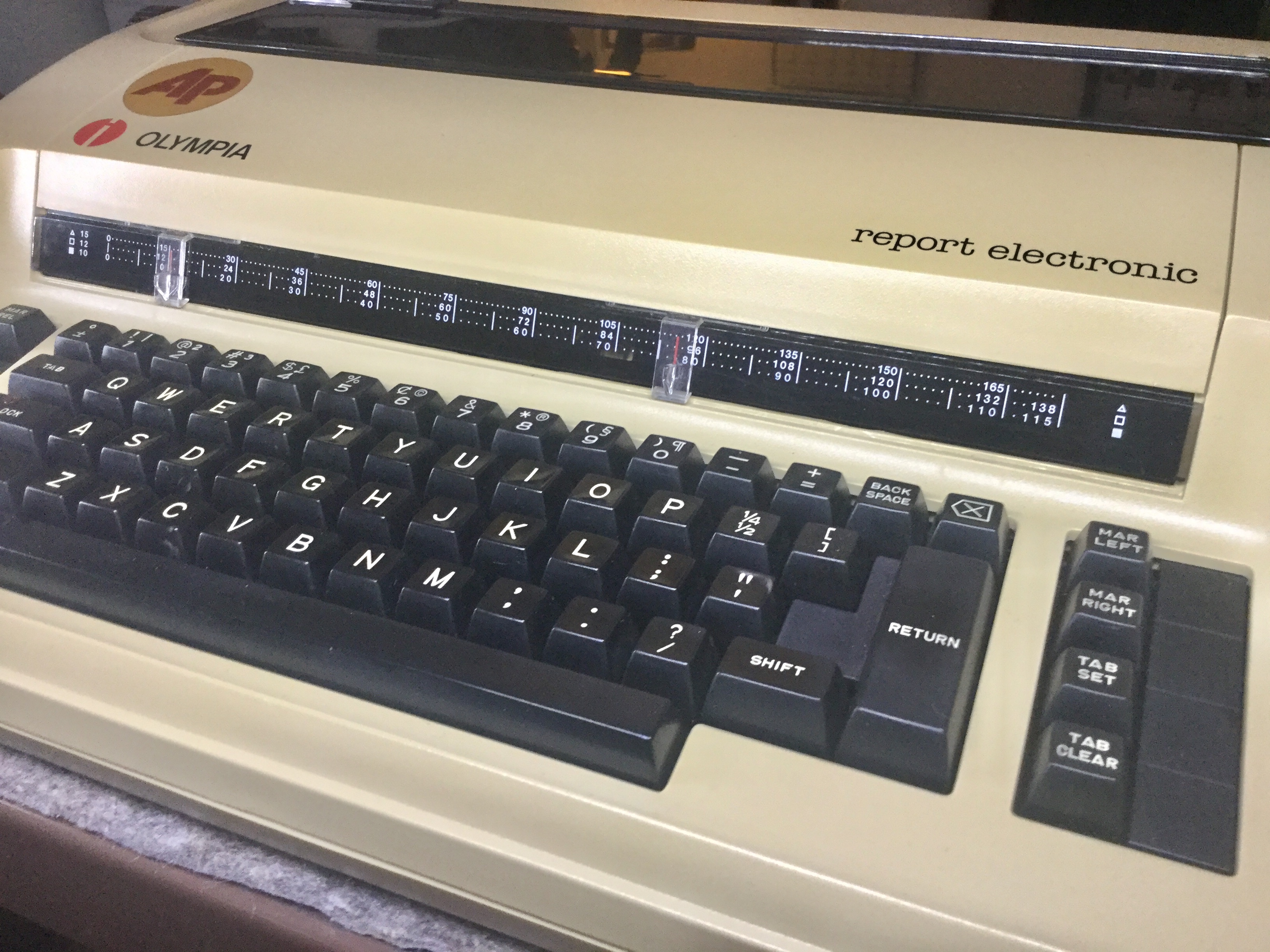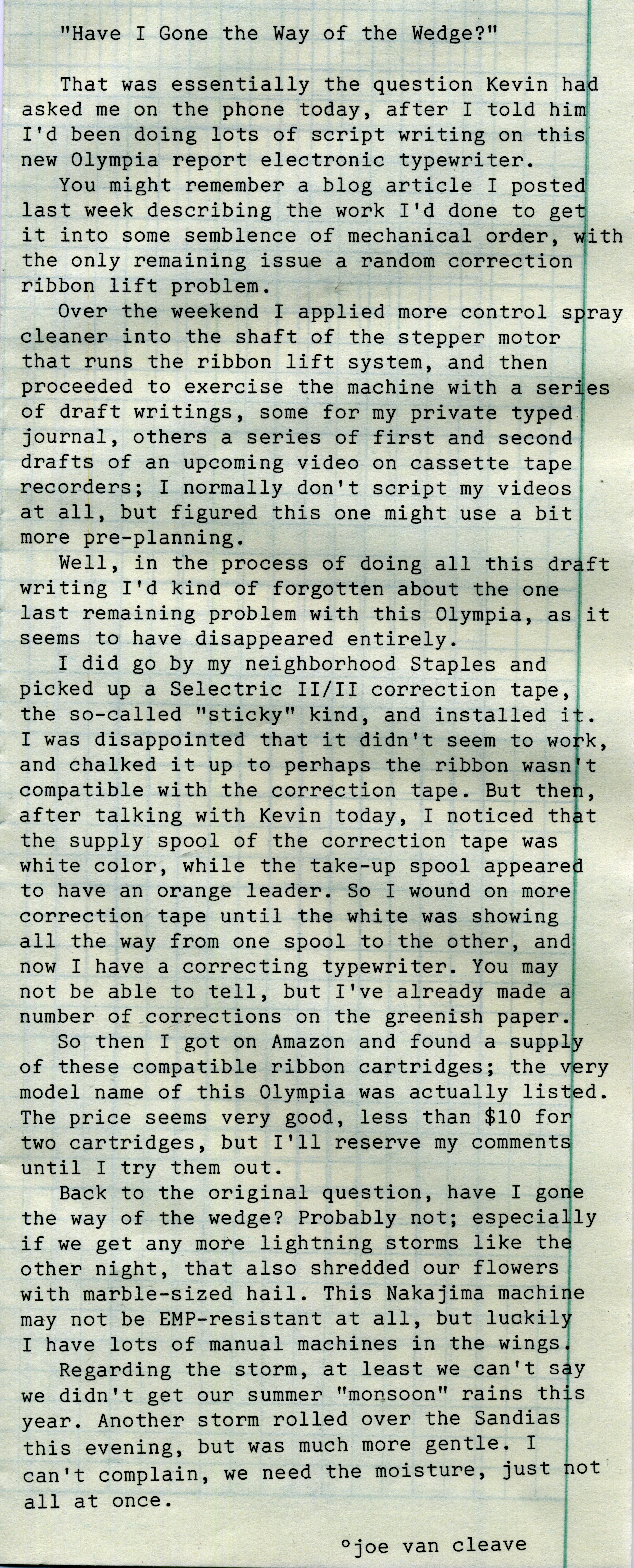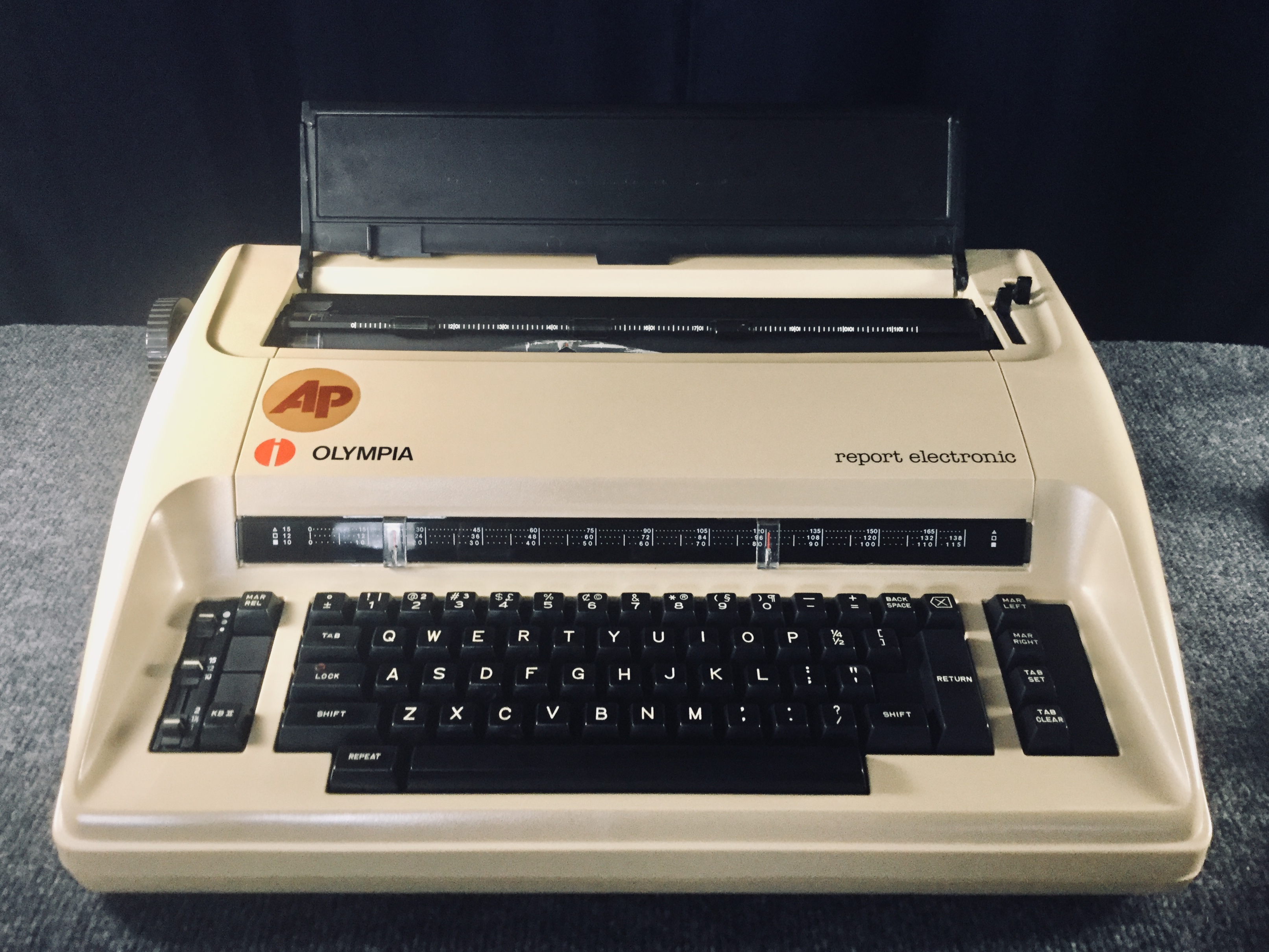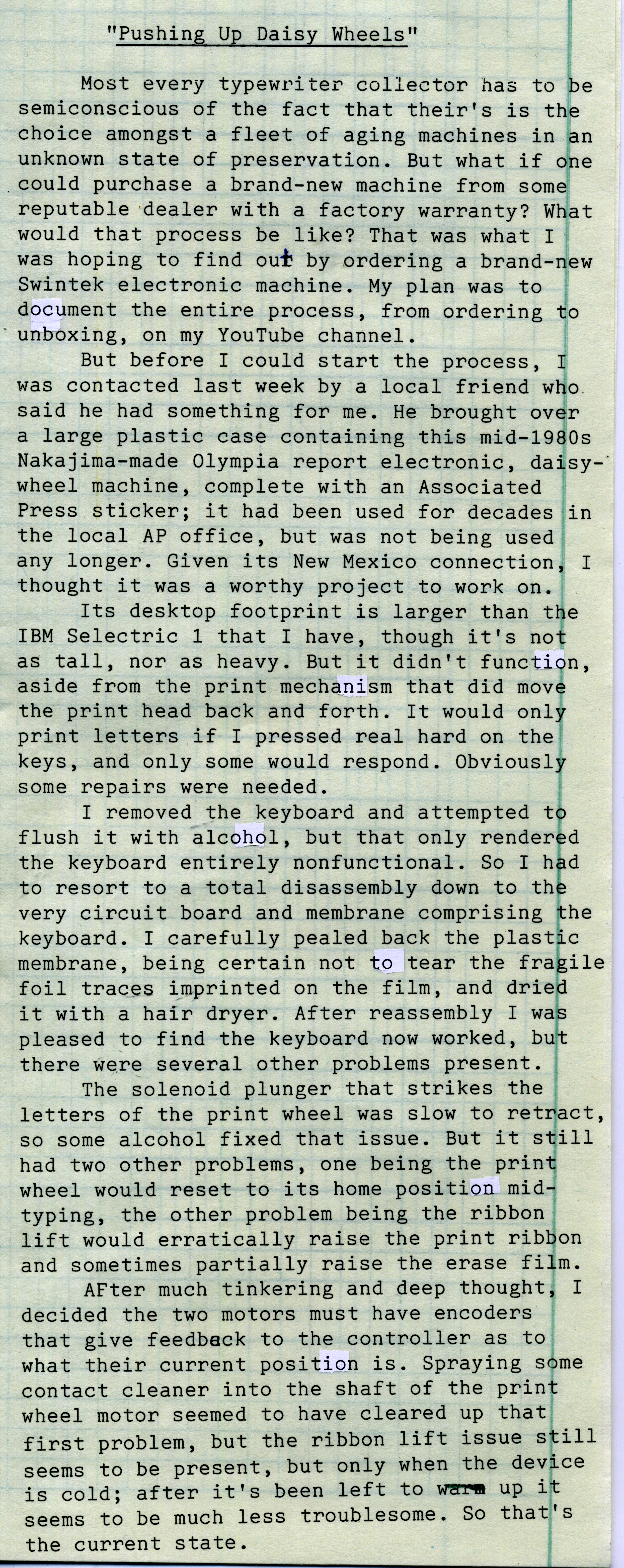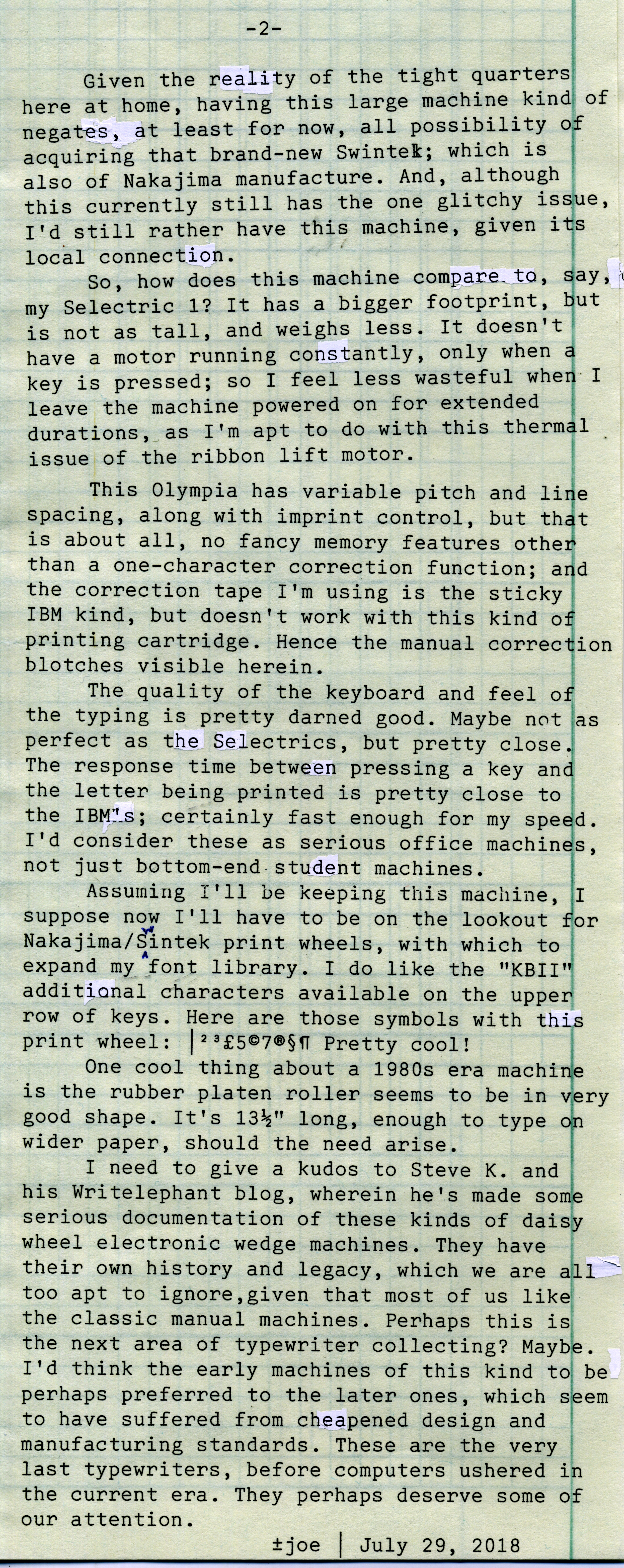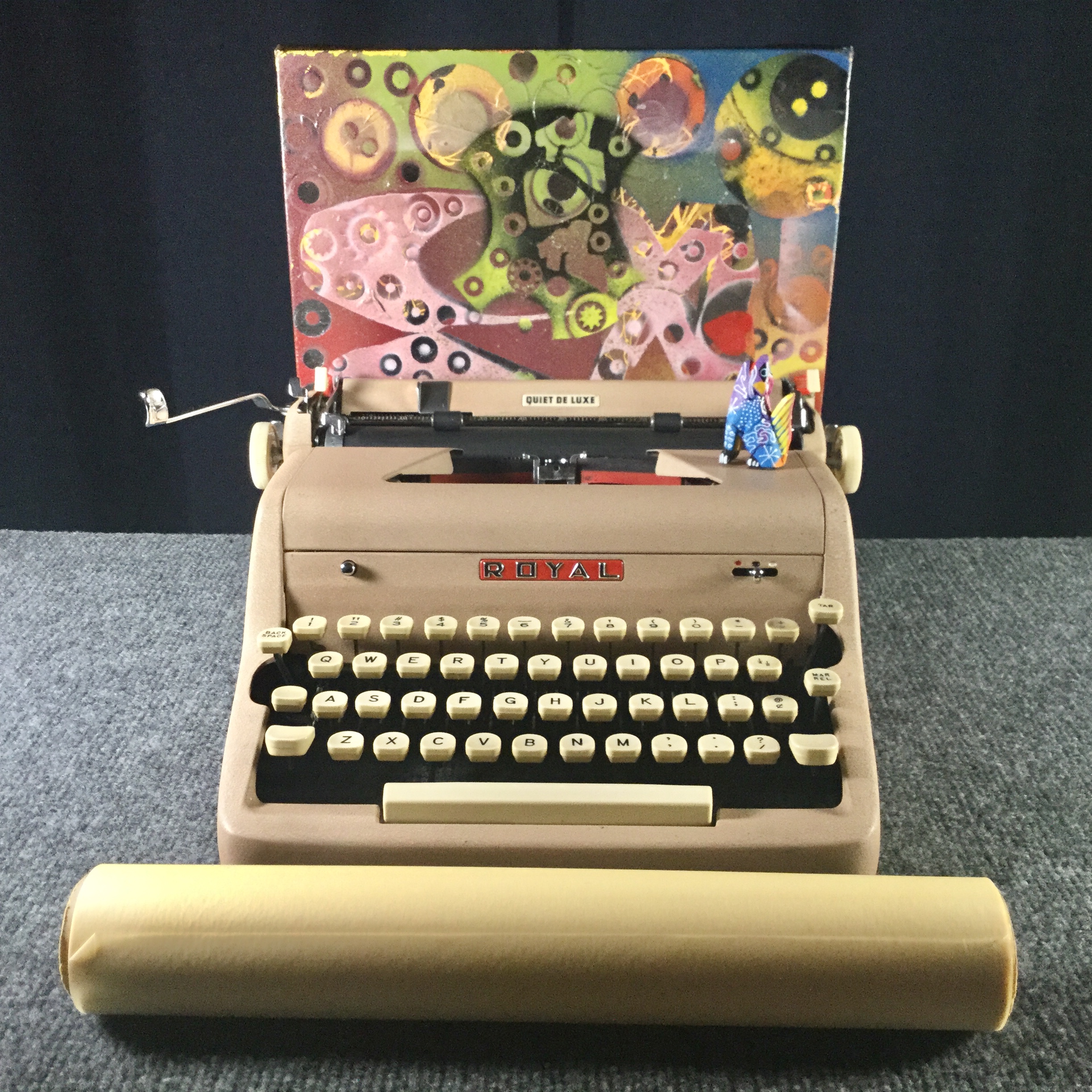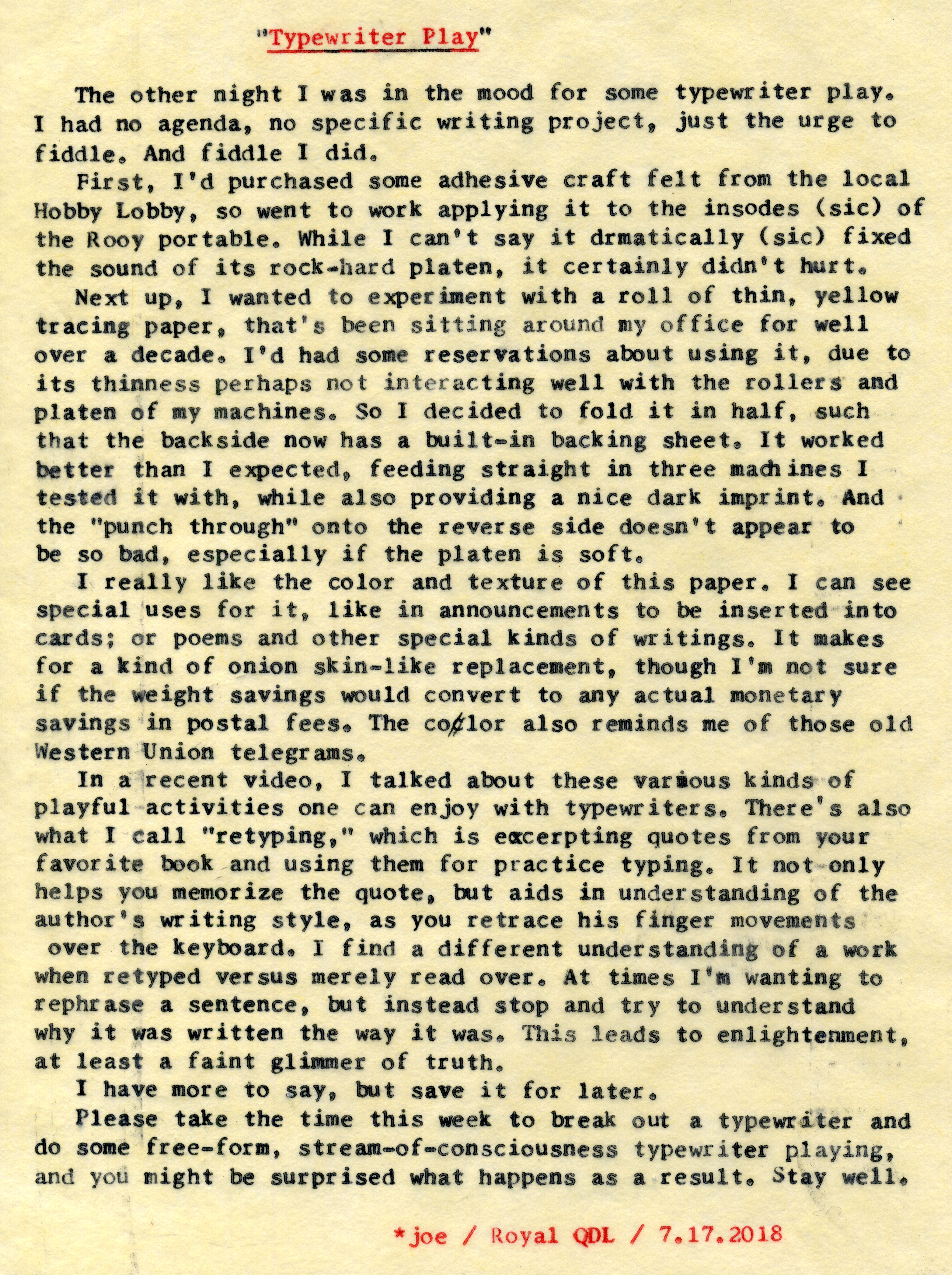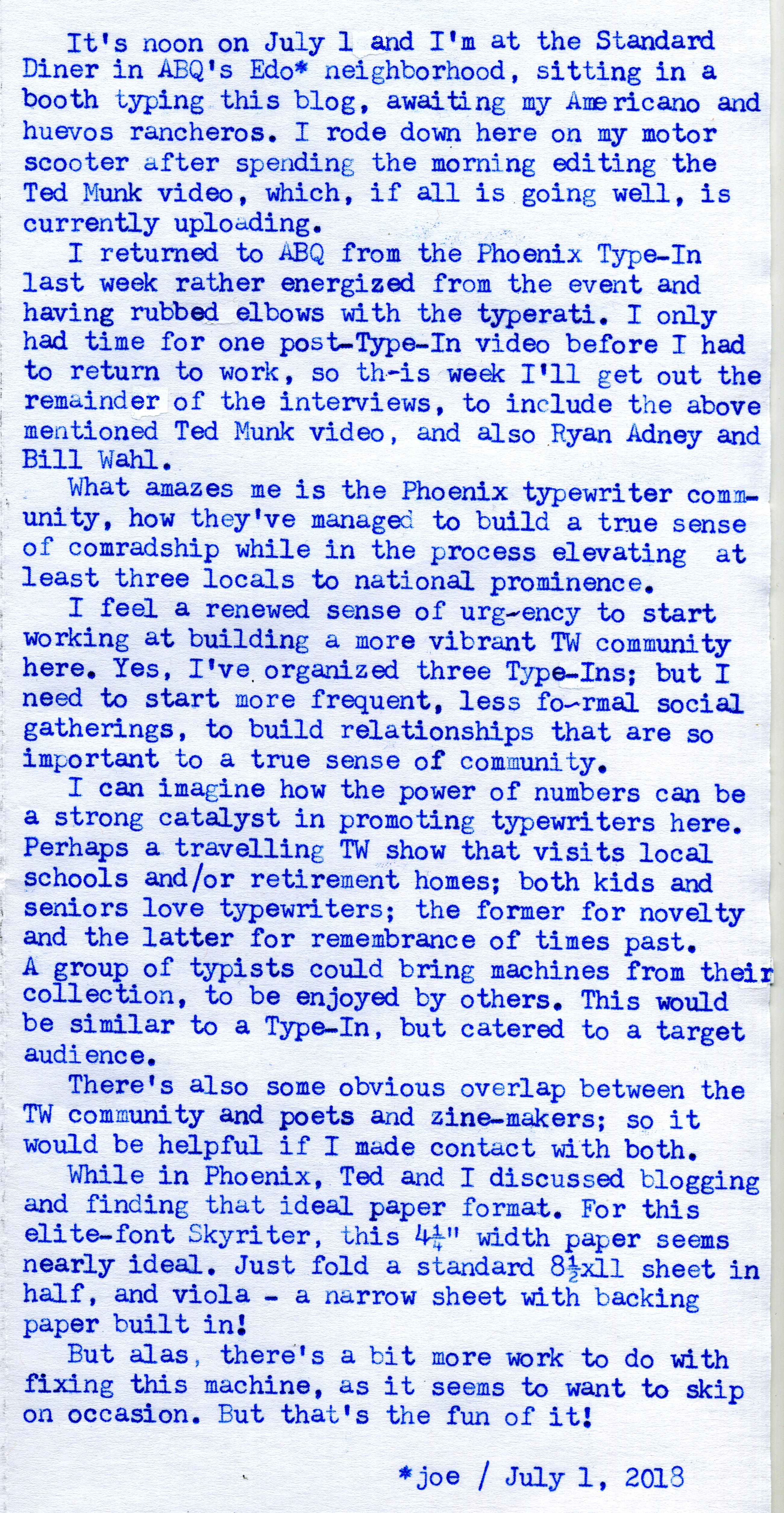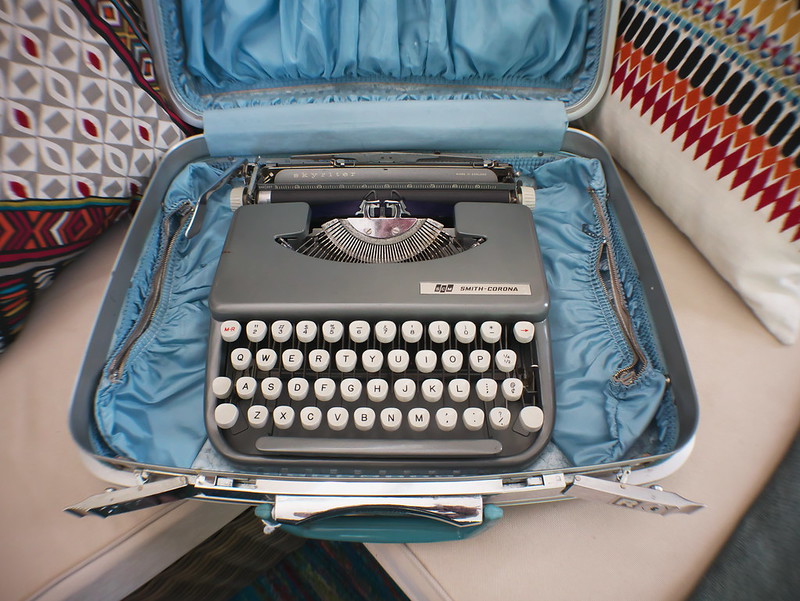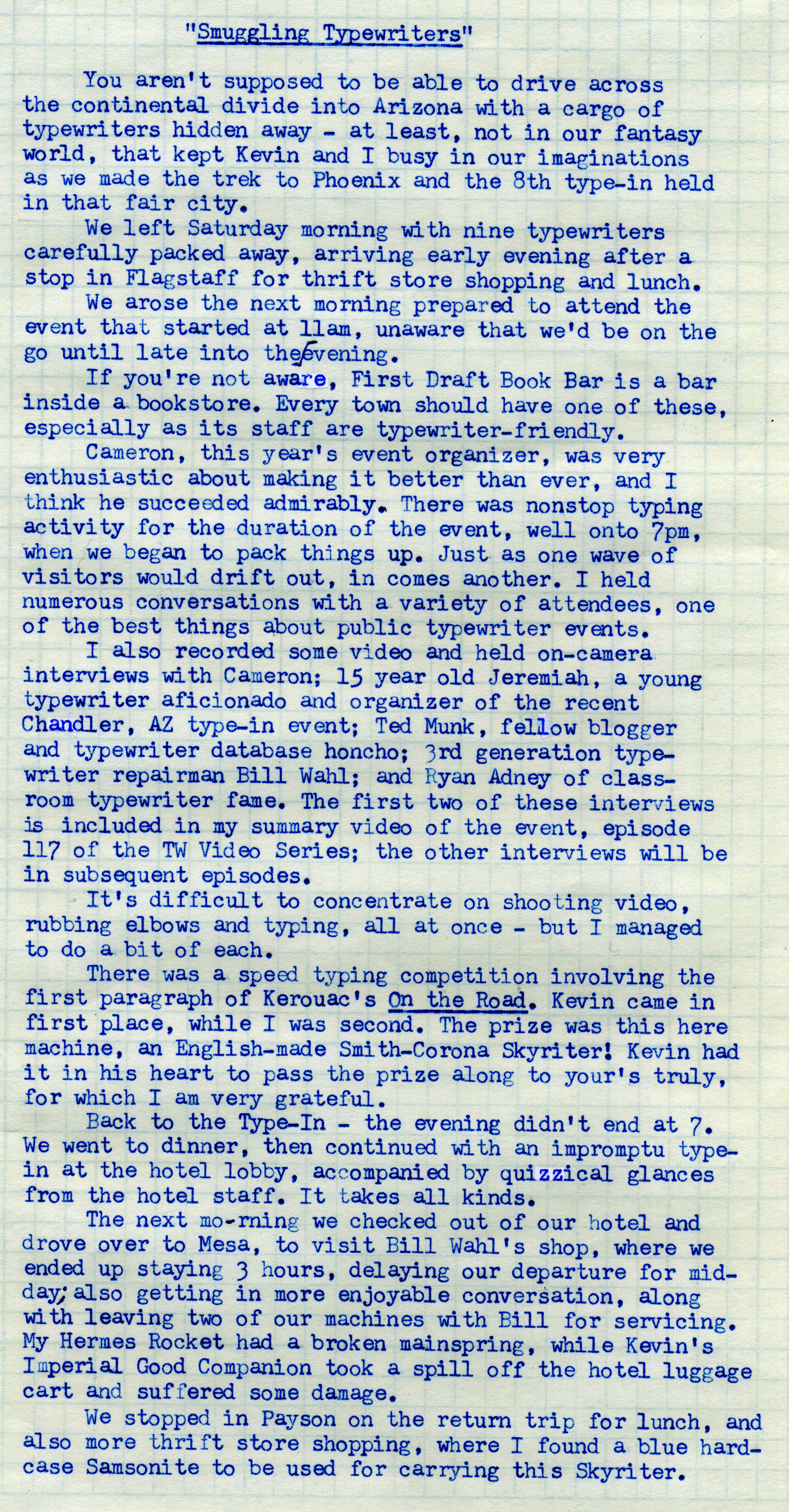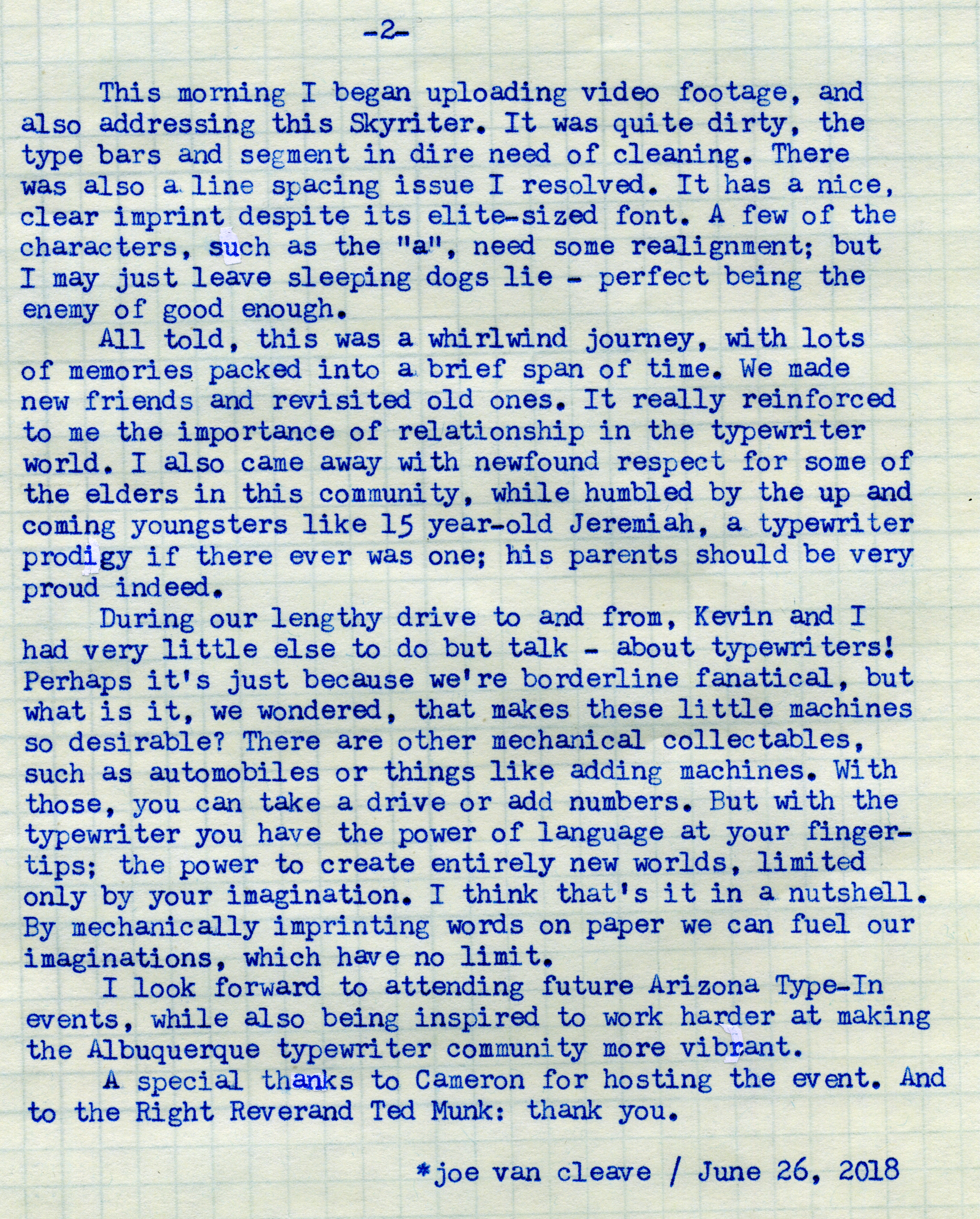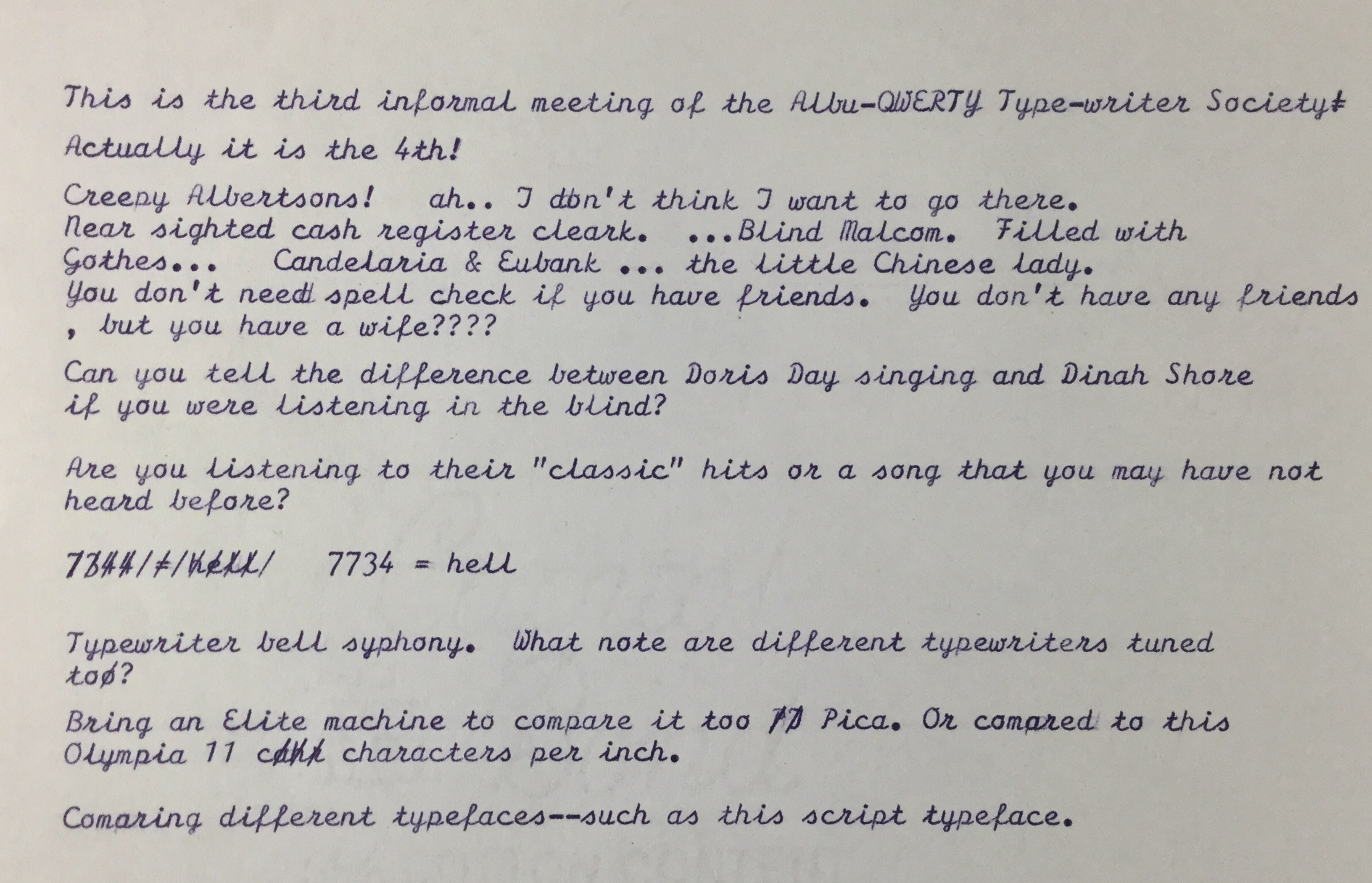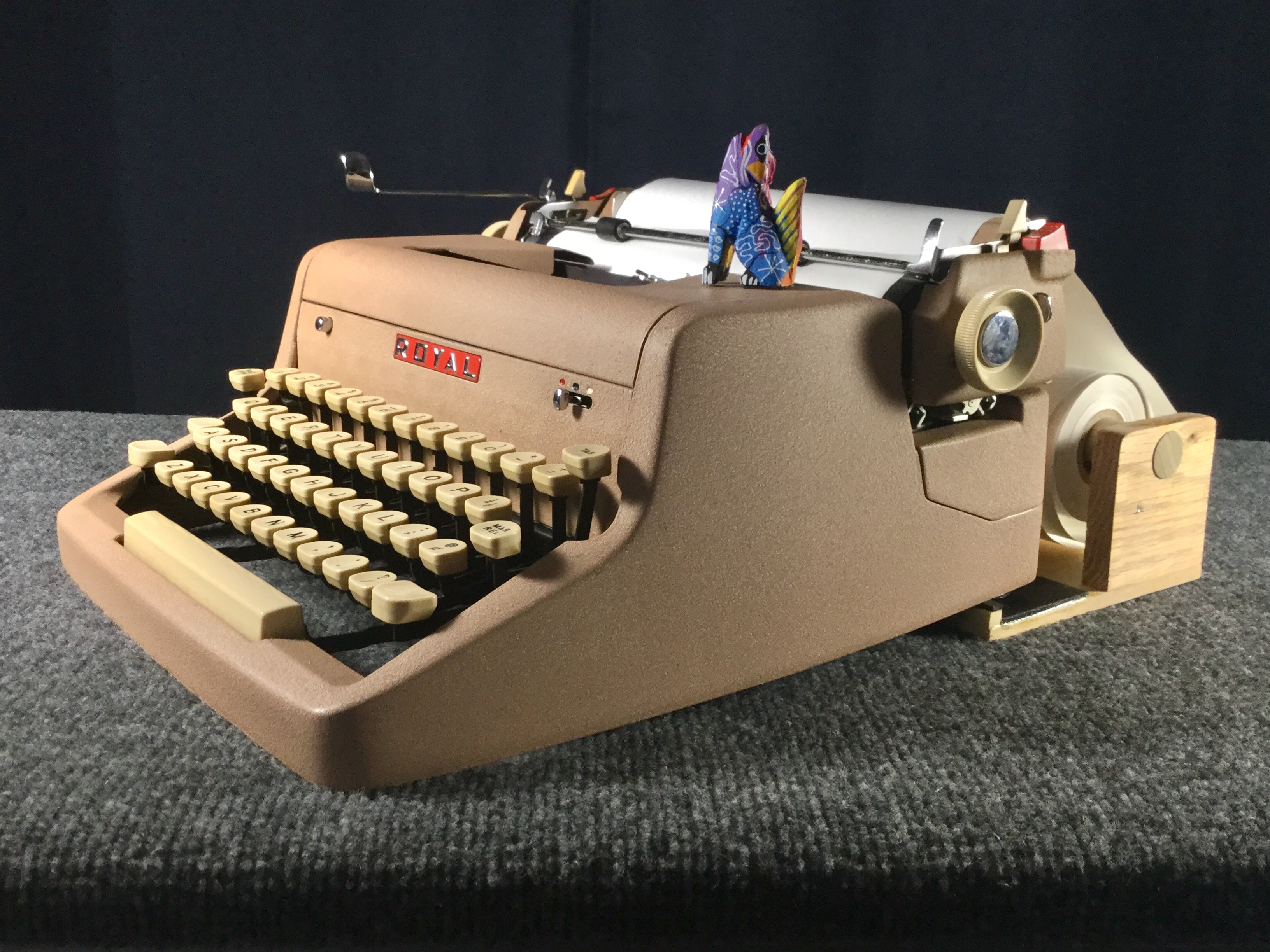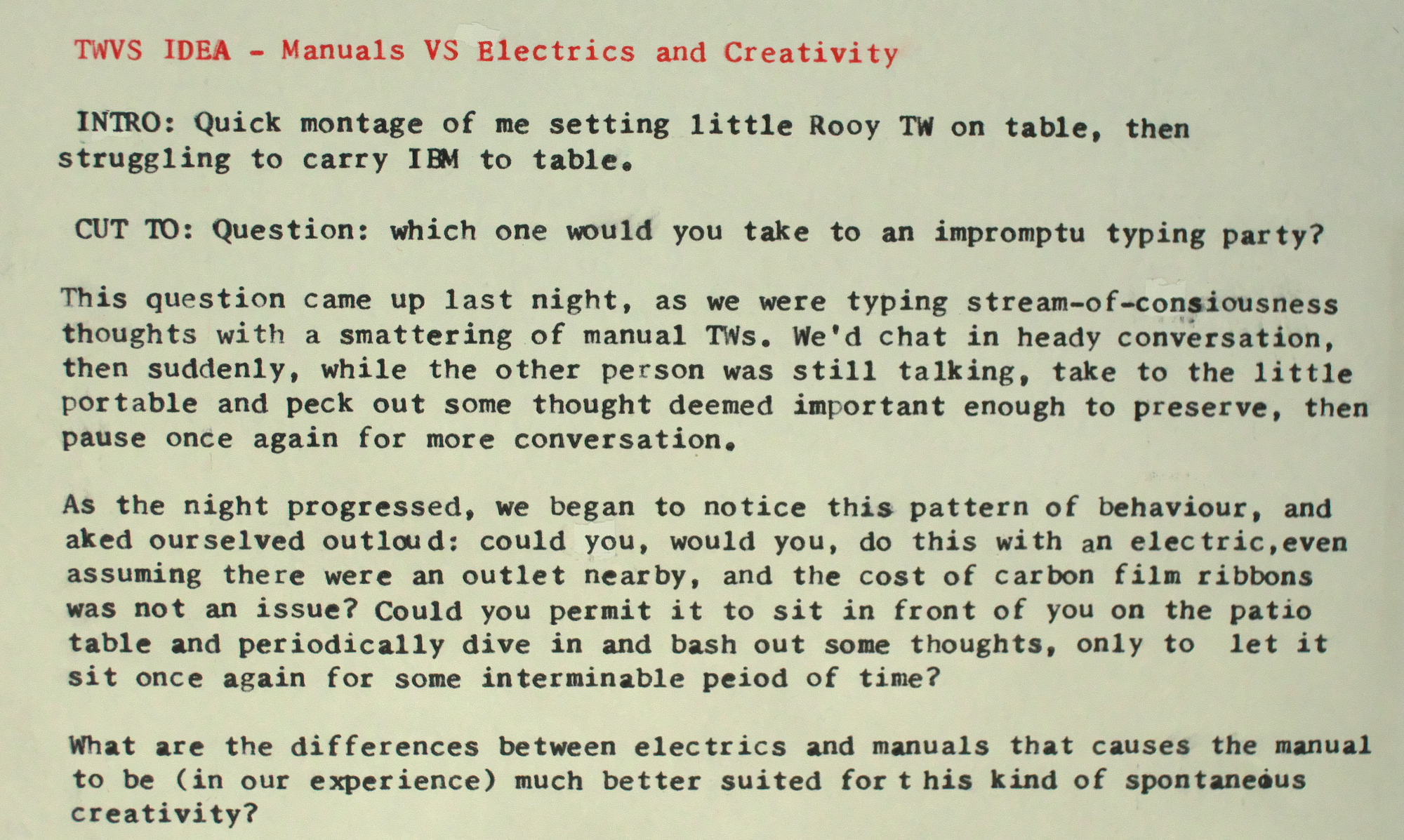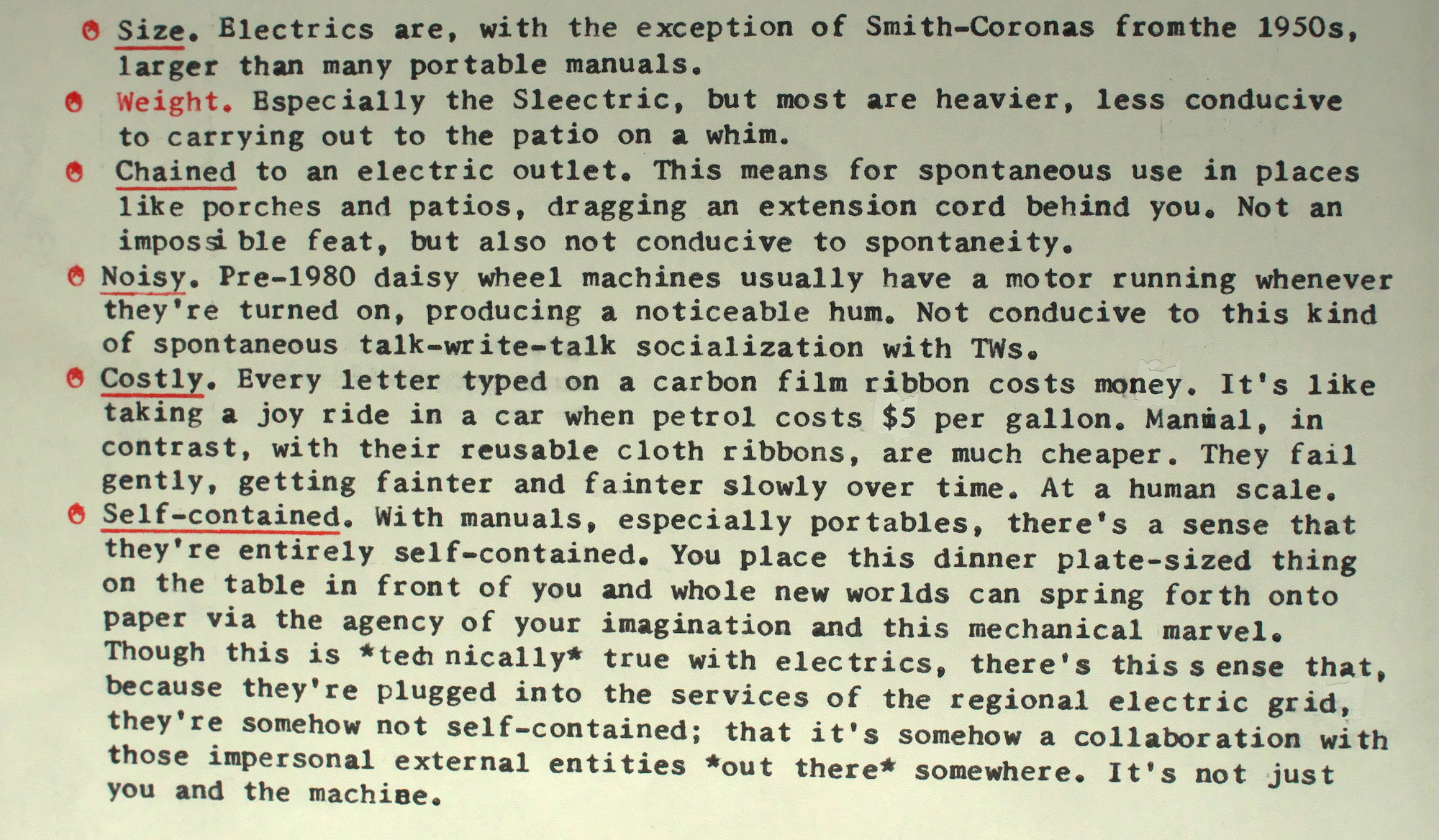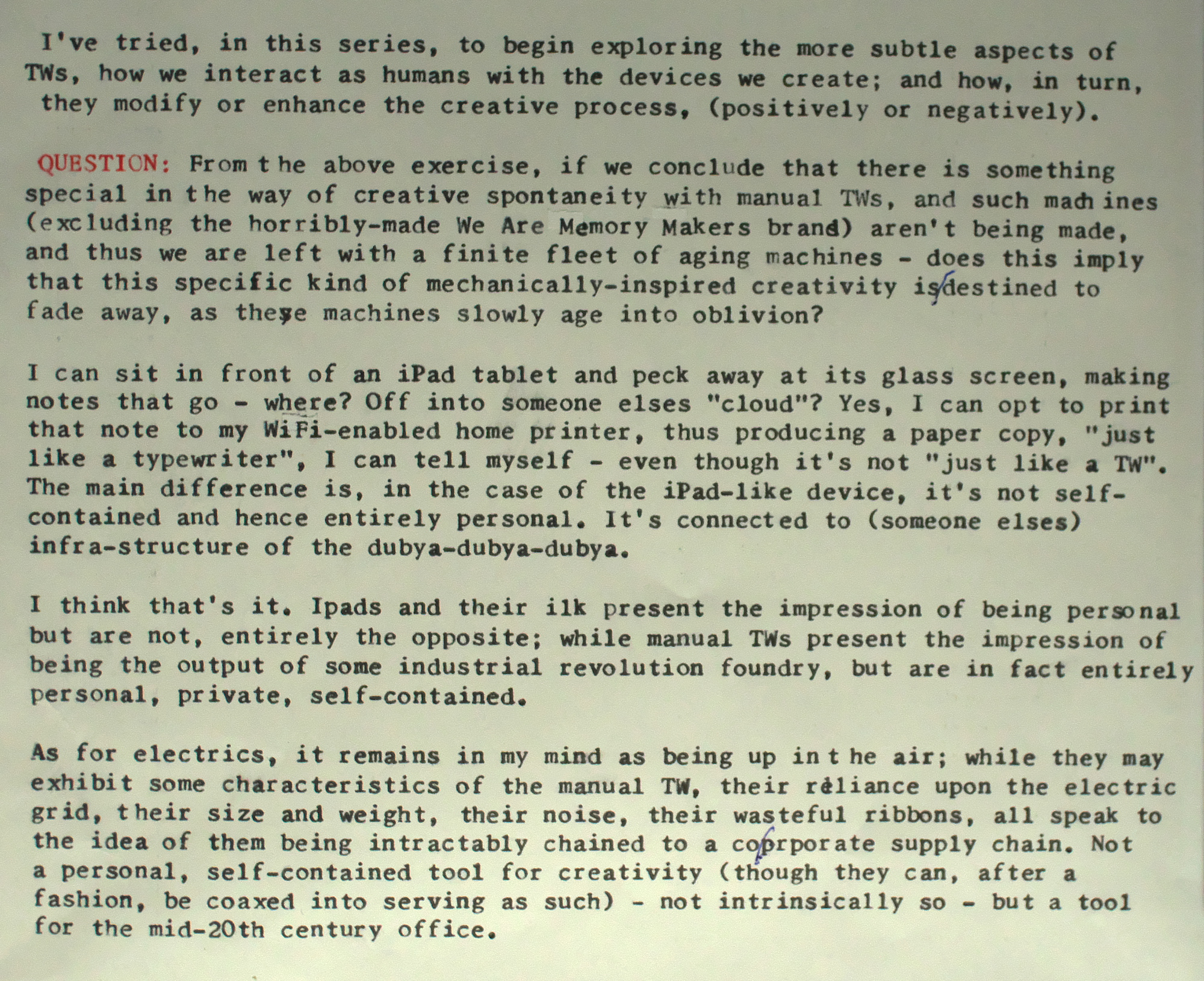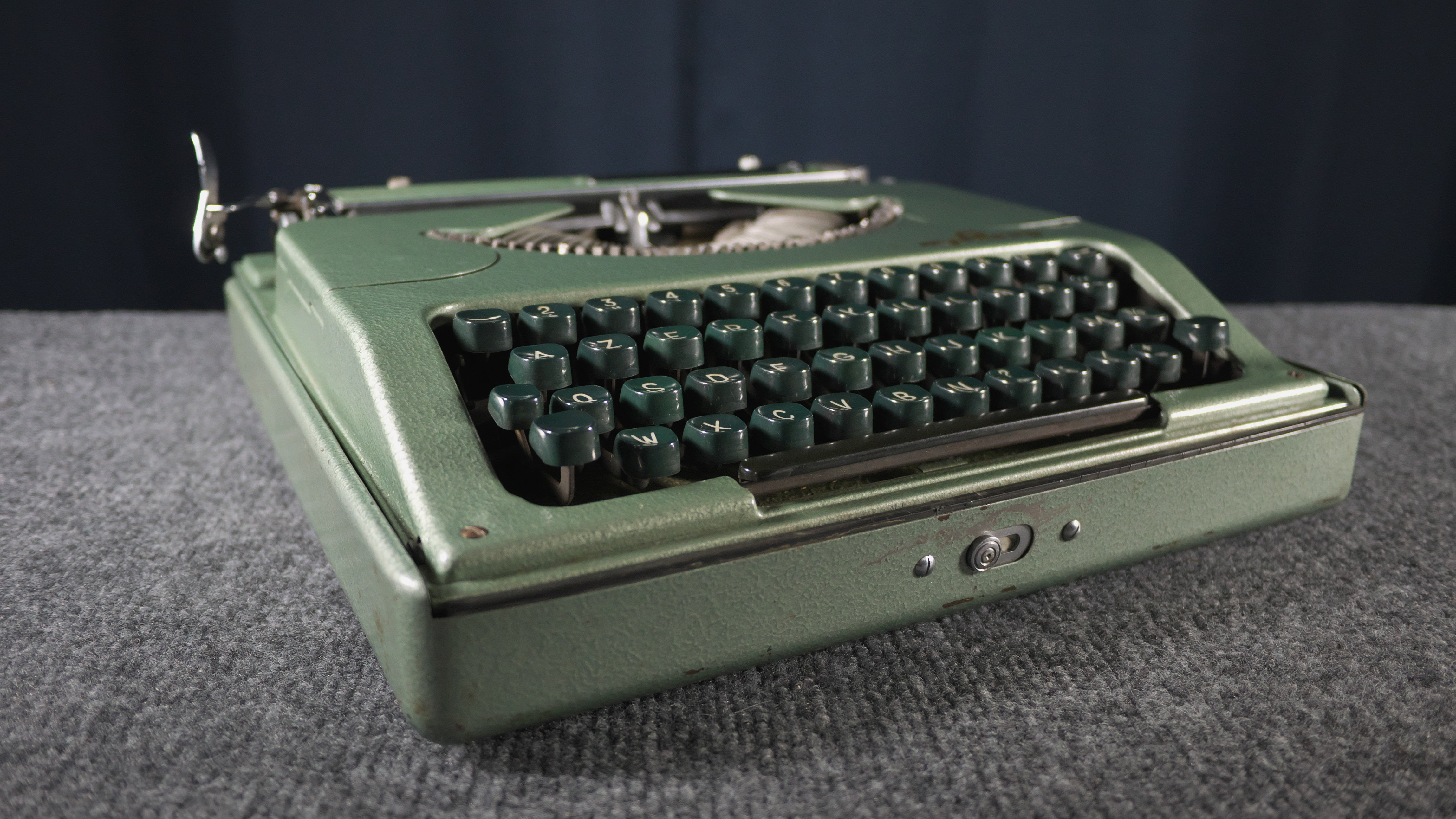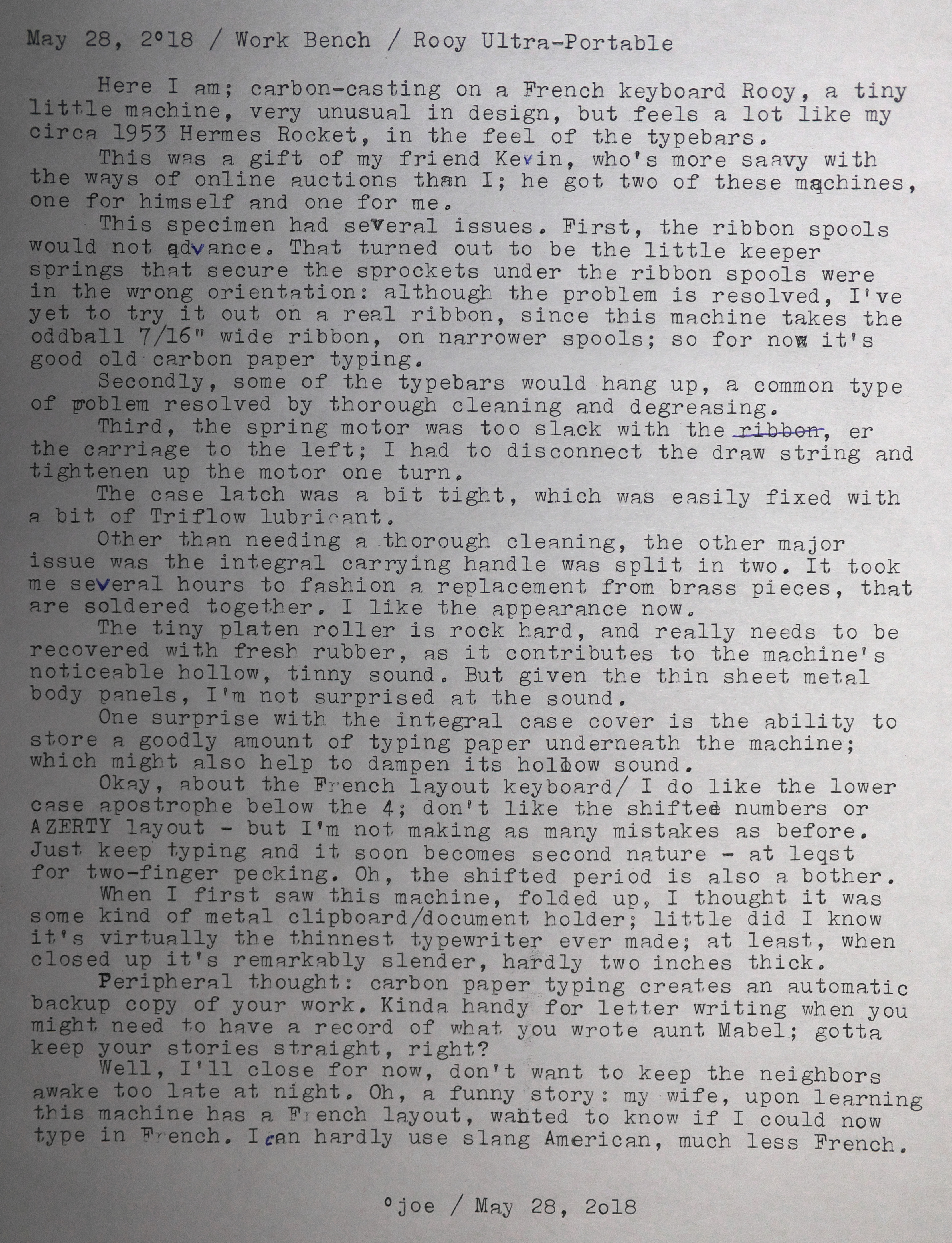Notes From Safari


TJ is a school teacher in Los Alamos, and I have his typewriter, an early-1950's Smith-Corona Silent. It used to be mine, until I sold it to him (or, more precisely, his school system) for use in his classroom. Sometime last year he told me some of the key levers had been bent, by overly-eager (I'm assuming) students. TJ was able to drop the machine off to me for repairs later in the year, during one of our Sunday ABQwerty Type Writer Society meetings. I easily managed to put the key levers back into good order, but since then it's been difficult arranging for TJ to pick up the machine. And now, with everyone (supposedly) in lock-down it'll have to remain with me for a while longer.
But today I decided to set the machine on my workbench and test it out, to make sure there were no other nagging issues. It does type very well, no mechanical issues of note, even the ribbon is sufficiently fresh. And I'd forgotten how much I like the typeface. But I needed a piece of paper to test-type with, so I grabbed an instruction sheet from a pile of clutter on the bench, for a safari rack that me and my grandson had installed earlier this week on his truck, and I was sufficiently inspired by the word "safari" in the instructions to hurriedly compose this vignette on the reverse side. Afterward, I read it to my wife, and she was sufficiently impressed that she's now encouraging me to continue this story in installments.
No, I don't really know if you can weld broken steel in the bush with a makeshift thermite furnace, but hey, a little exaggeration never hurts! And don't go four-wheeling with that Smith guy, he'll get you in more trouble than you can shake a stick at.
The other day I'd felt sufficiently cinematic (is that a real feeling?) that I wanted to record some B-roll black & white video on my Lumix G7 with one of my Minolta MD lenses. It was snowing lightly, a rather rare occurrence in April (though our mile-high altitude doesn't preclude such an event) and the inclement weather was rather inspiring, since sunny days are rather commonplace. For adapting manual focus lenses to my digital camera I'd already been using the 7Artisans 25mm F/1.9 lens and the Minolta MD 50 F/1.7 at various times, but had never given the 58mm Rokkor lens a real test. After some test shots around my office and outdoors, I decided that the 58mm was at least as sharp as the 50. Naturally I'd need to reduce the light incoming to the sensor if I hoped to use the lens wide open at F/1.2, so I put on a variable ND filter, after futzing around with finding the proper adapter rings.

By itself the Panasonic G7 isn't that big of a camera, but with that big 58mm lens and even wider ND filter hanging off the front it's rather sizable. But it has a reassuring heft, and the haptics are about perfect for manual focusing, since the G7 has focus peaking and the G-series cameras pioneered the "tilty-flippy" screens (that other manufacturers pretend these days they invented), that makes these cameras so convenient to use.
One thing led to another, and before I knew it I was creating a motivational video on creativity and writing during this unsettled period. I thought the B-roll intervals between shots worked pretty well for the video.
Labels: B-Roll, Panasonic Lumix, smith-corona silent, storytelling, typewriter play, typewriter repair, Typewriter video series, writing
